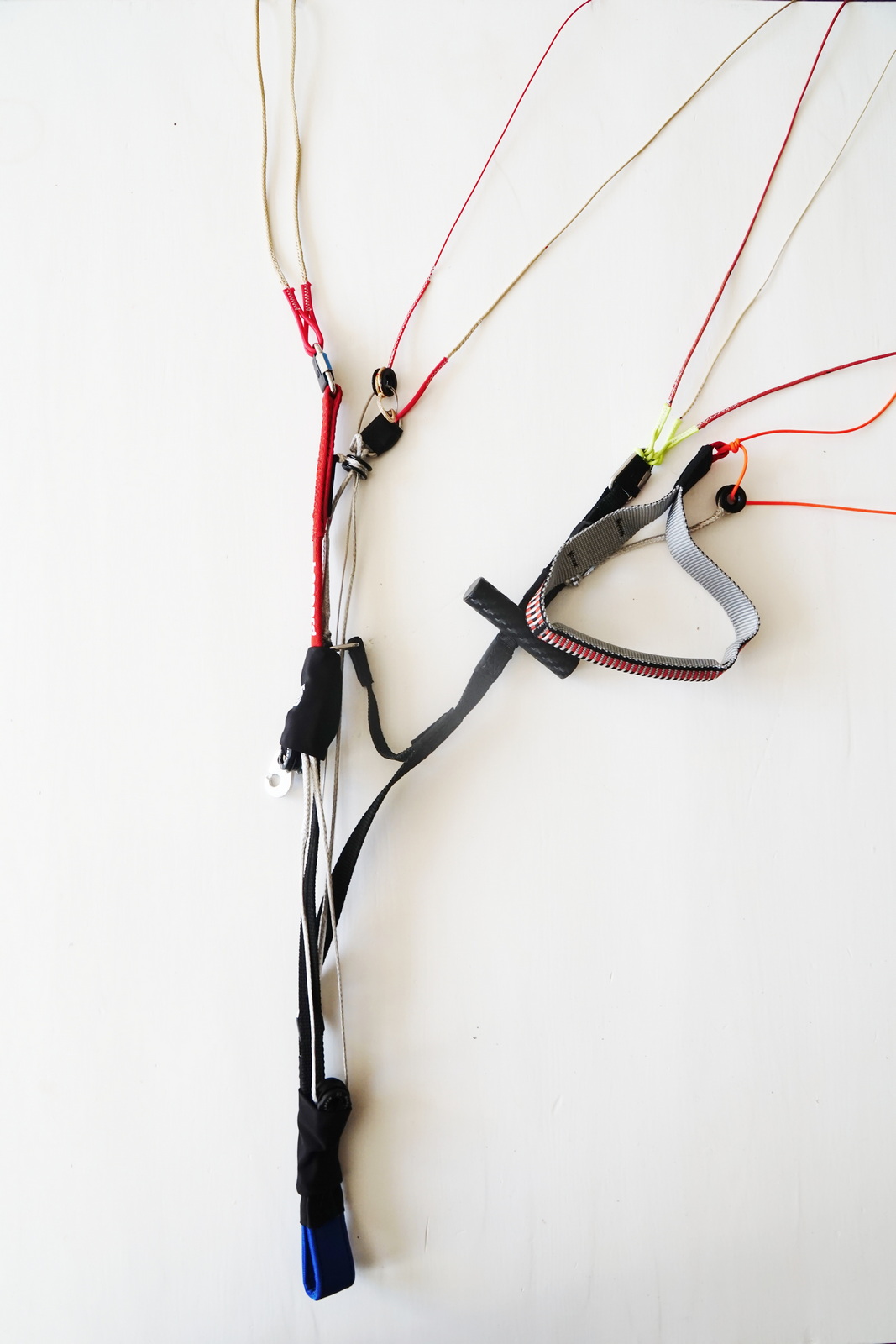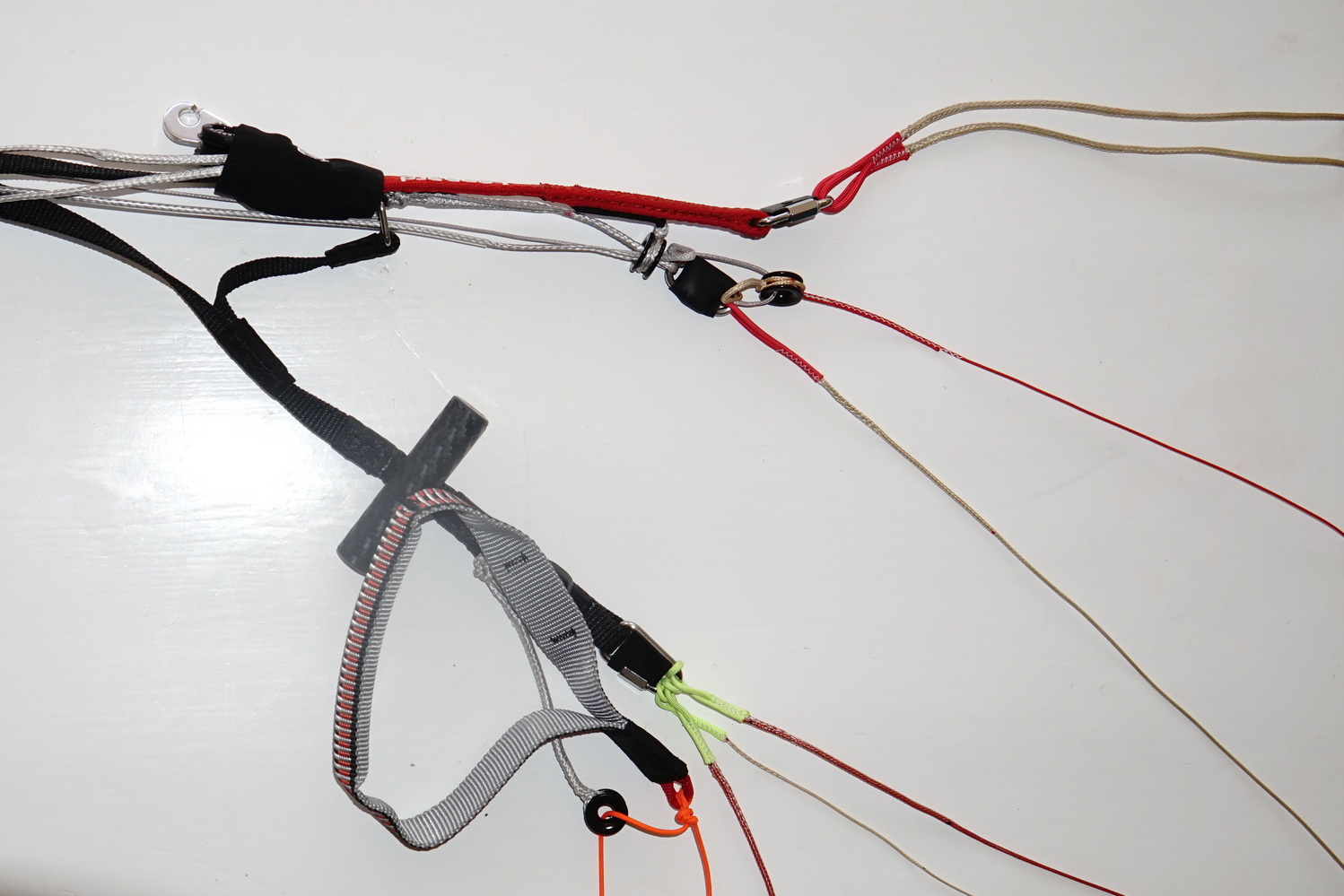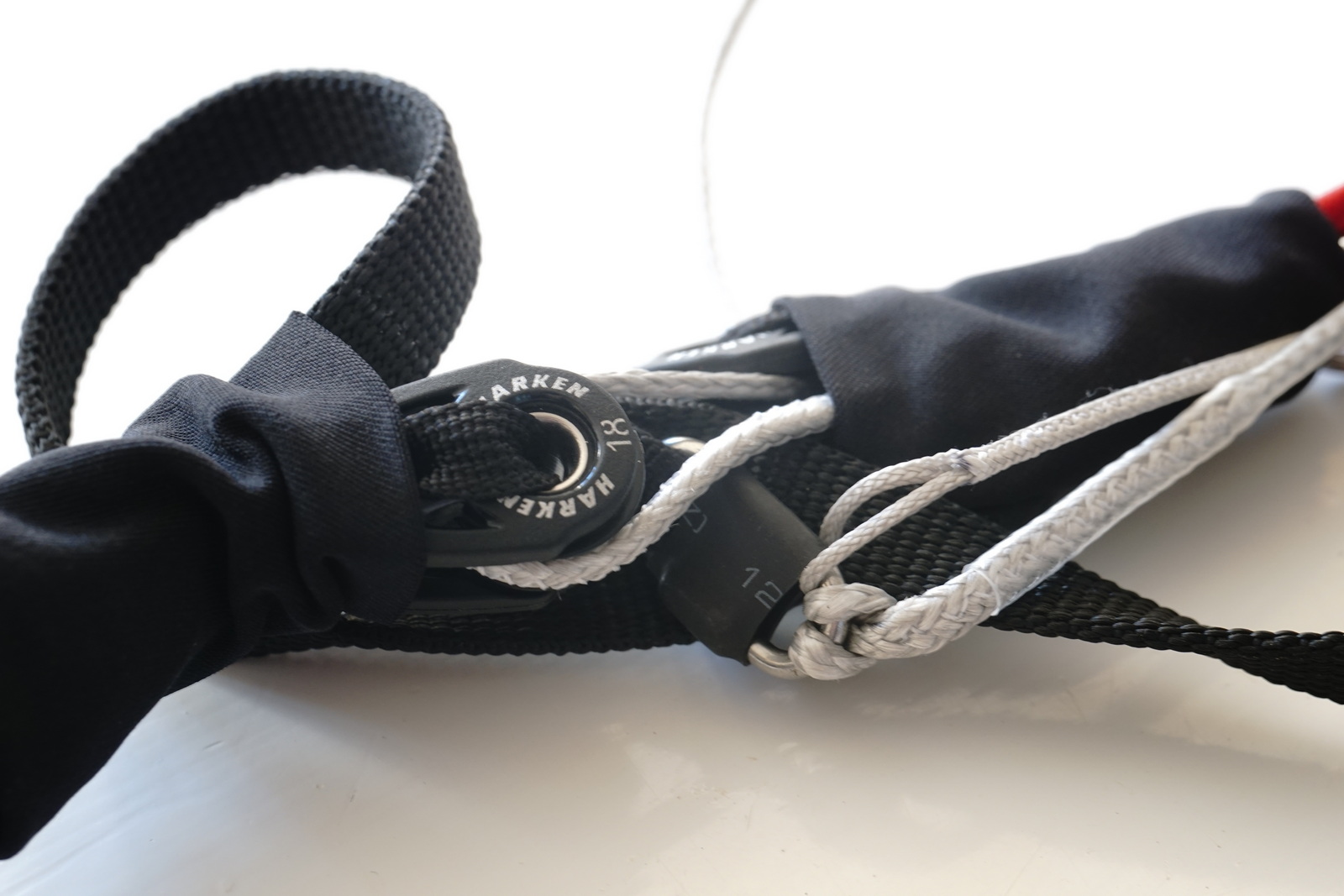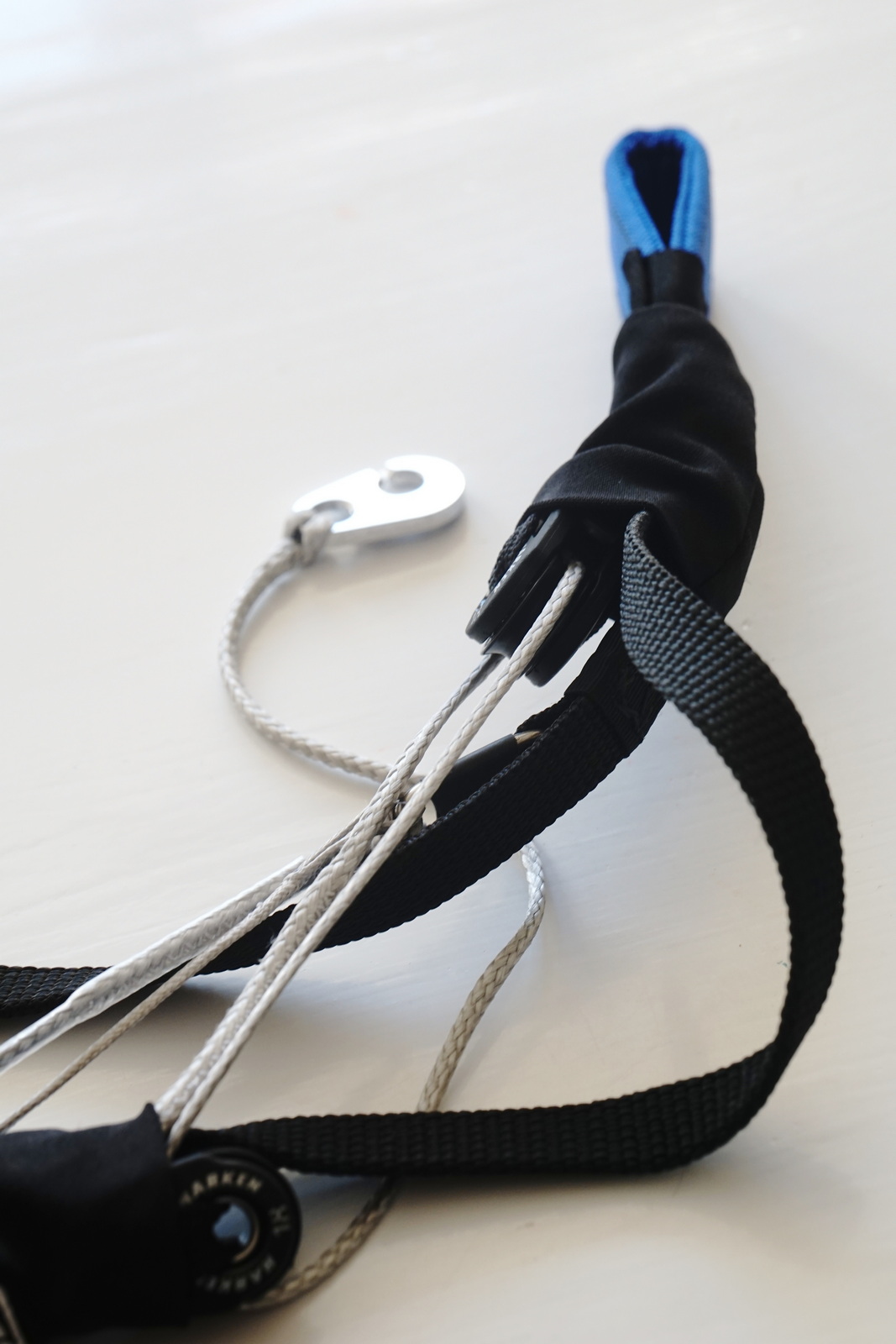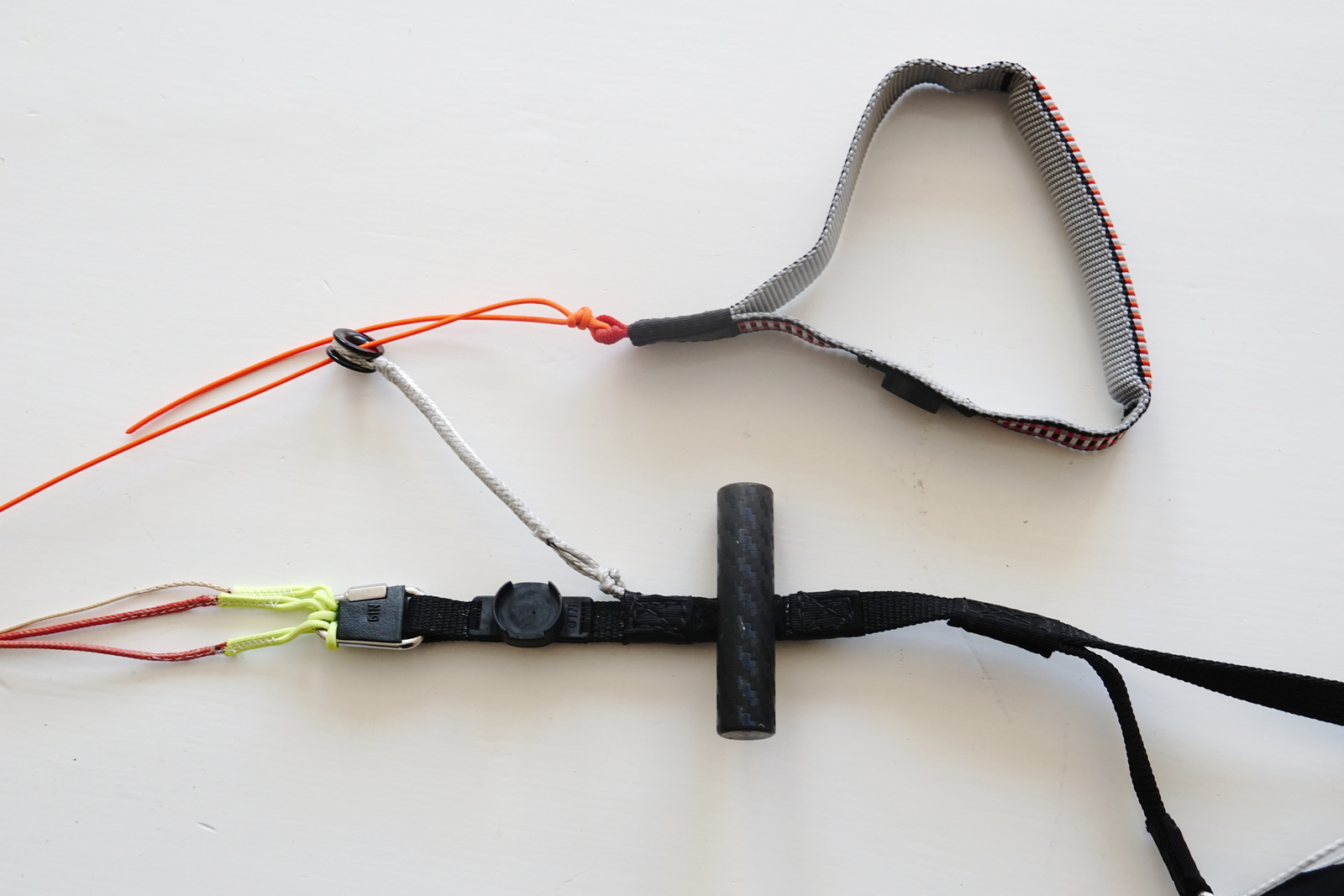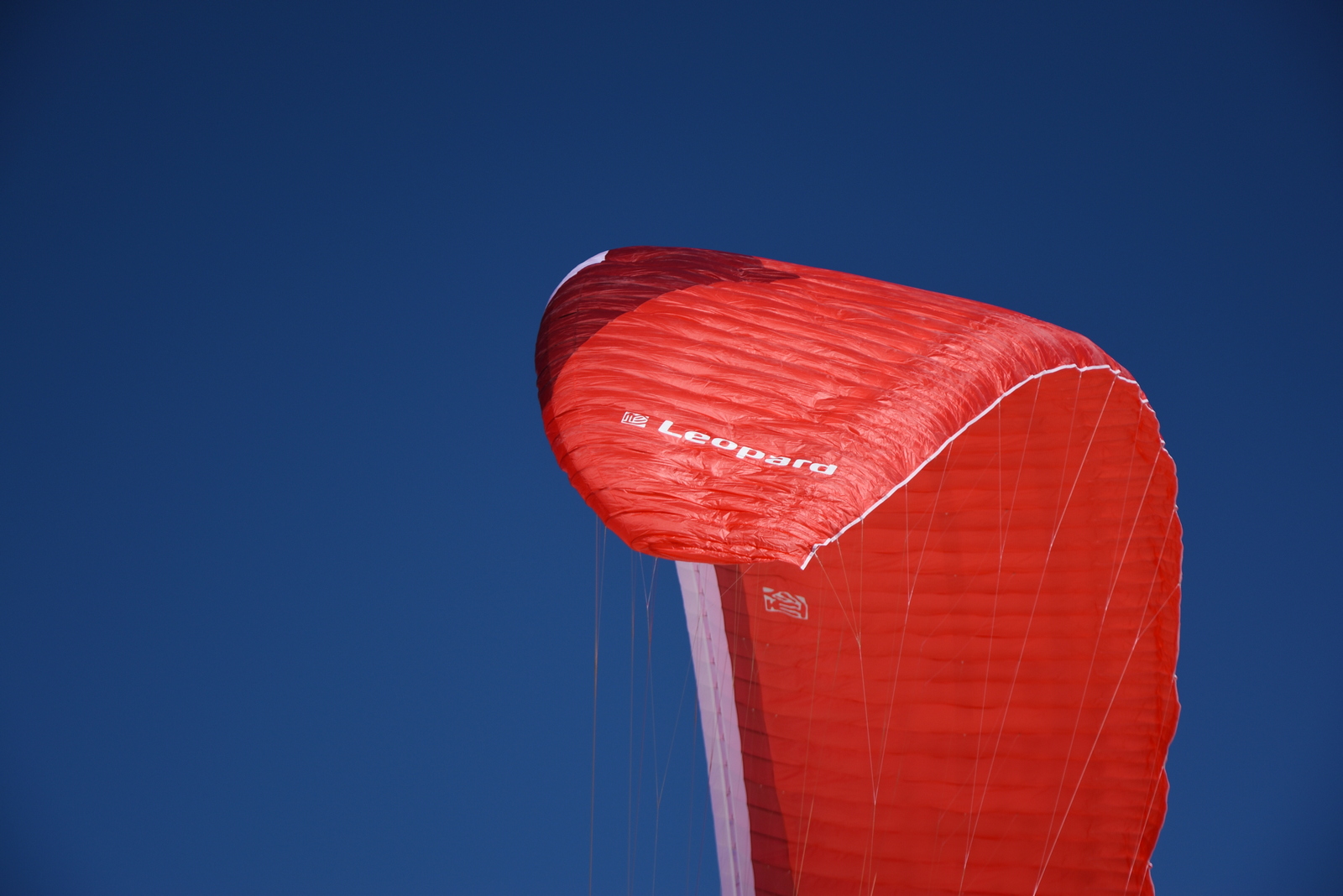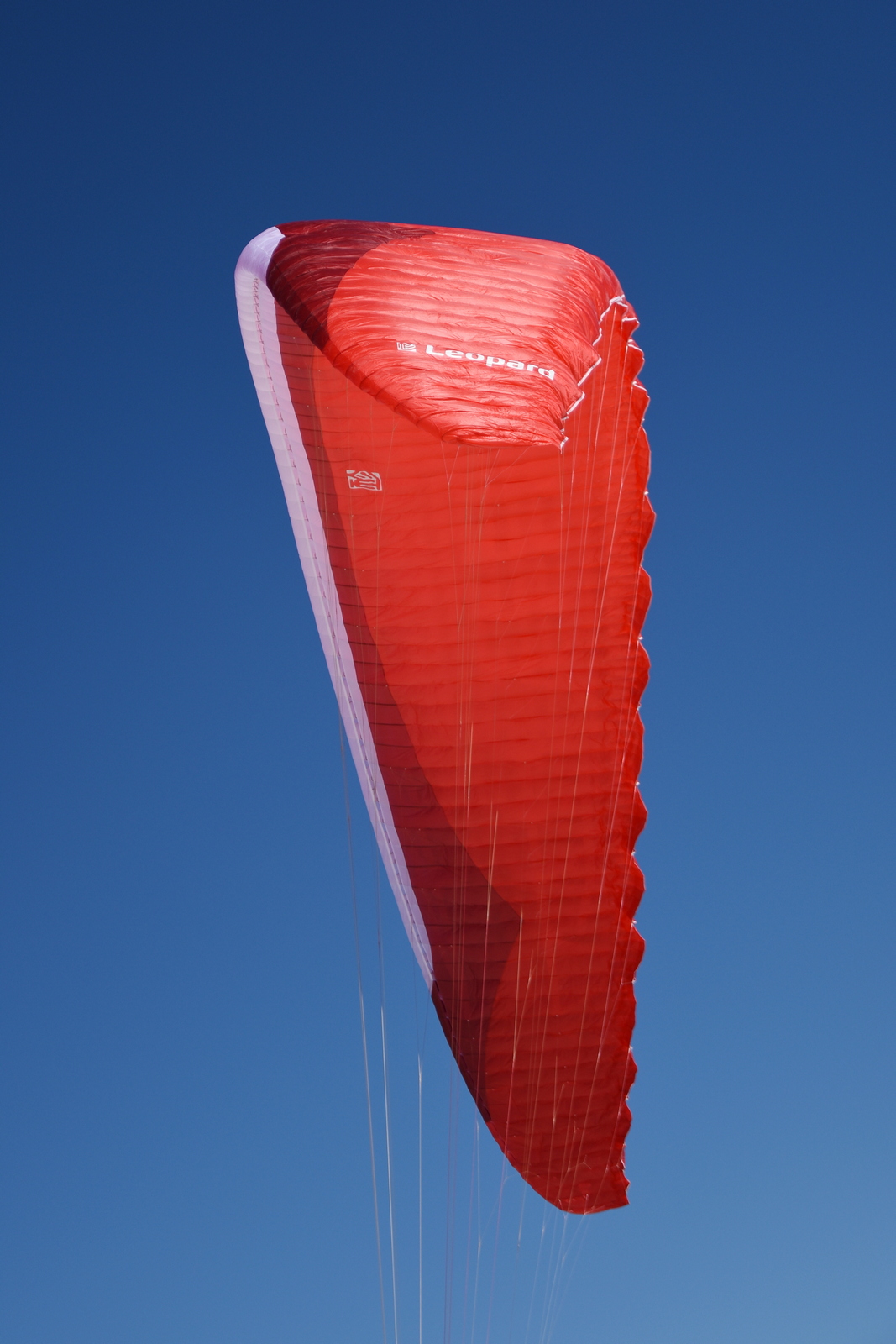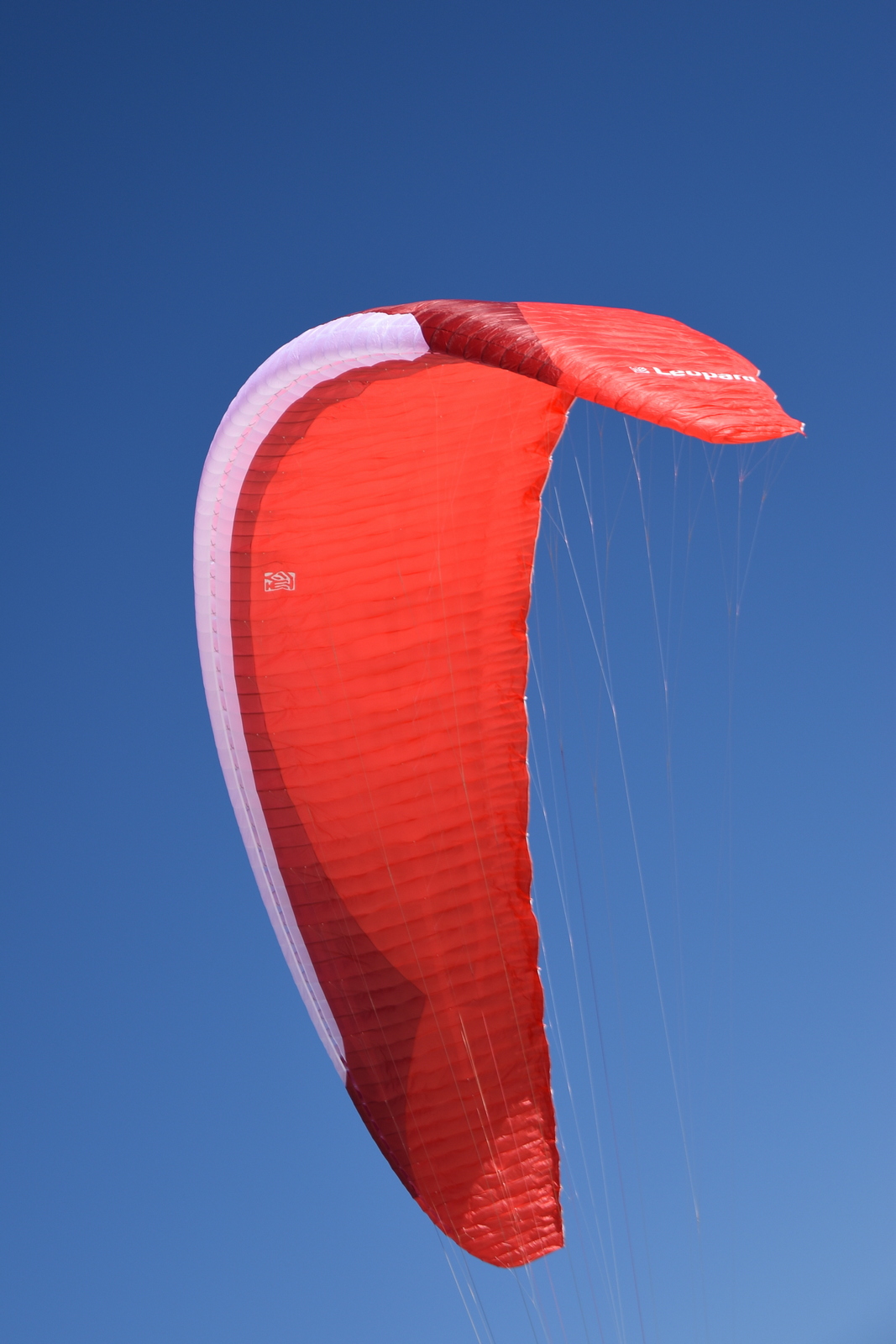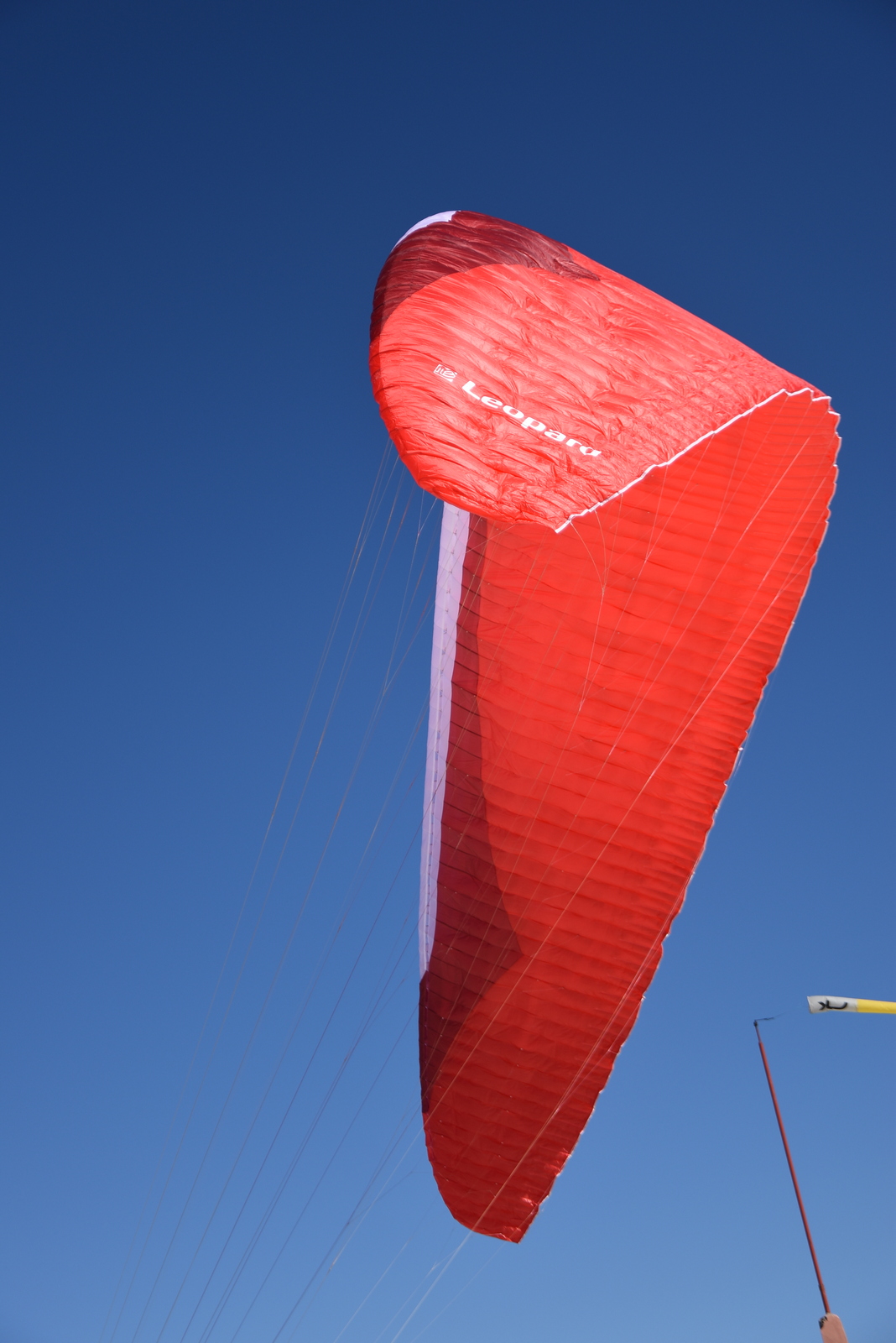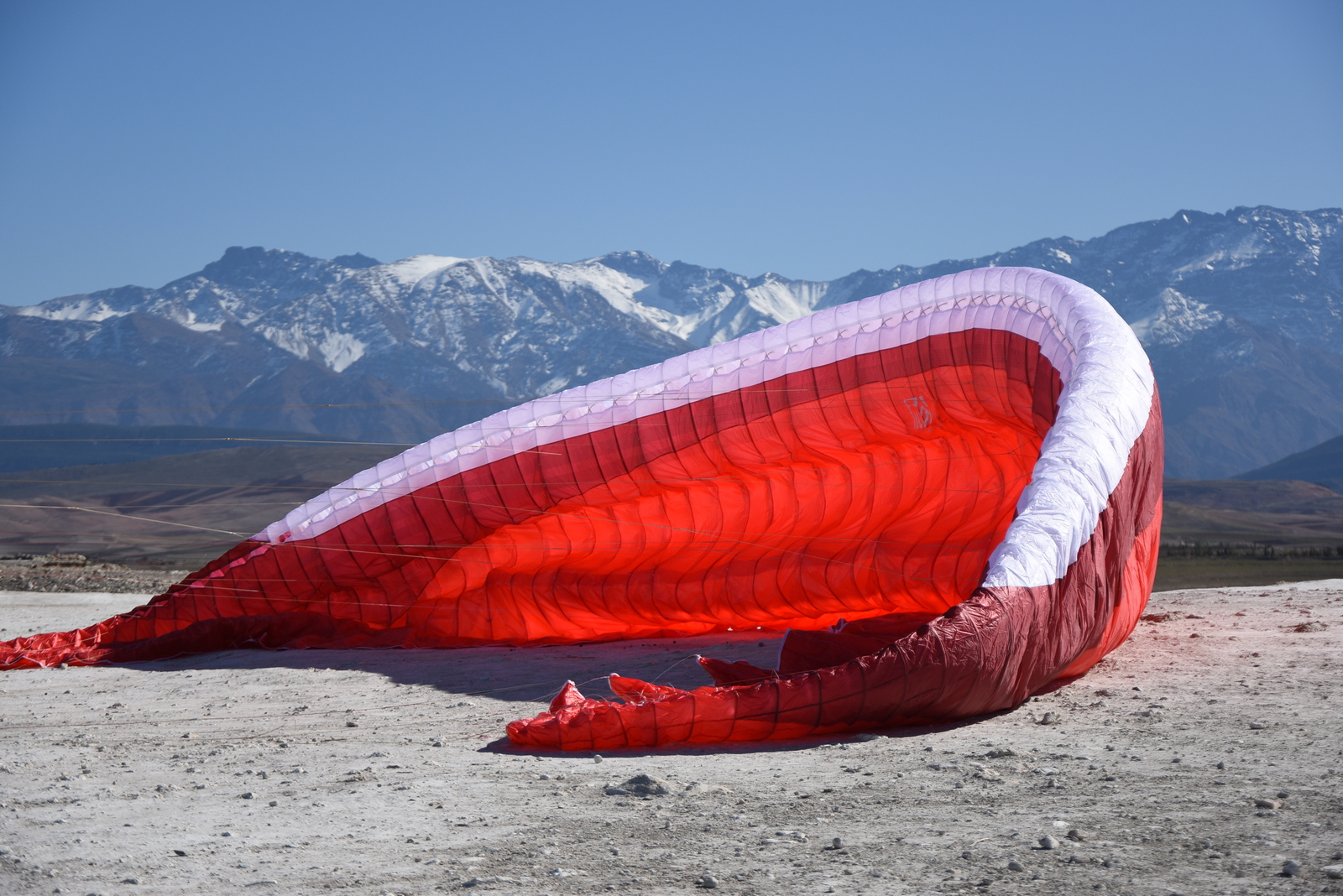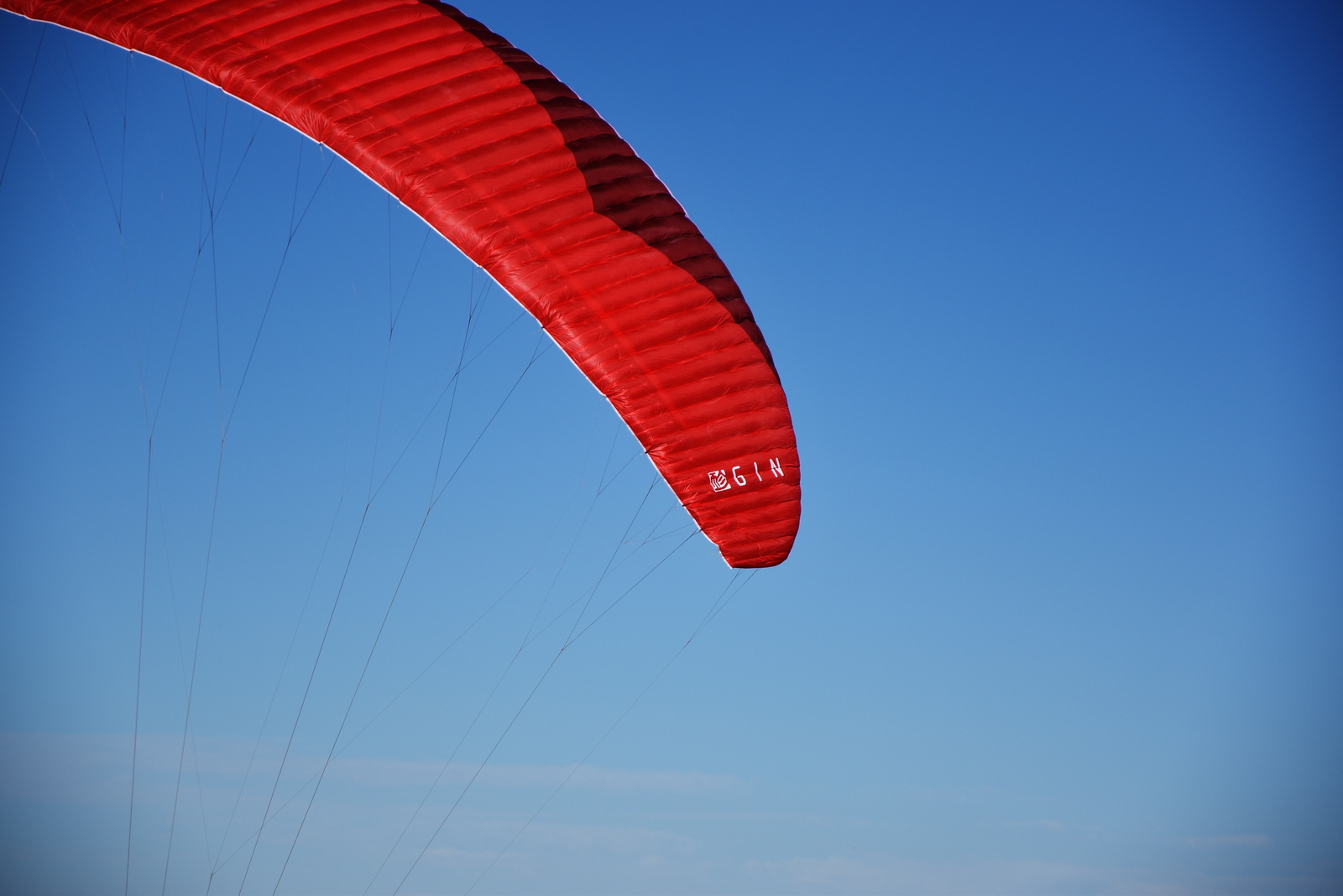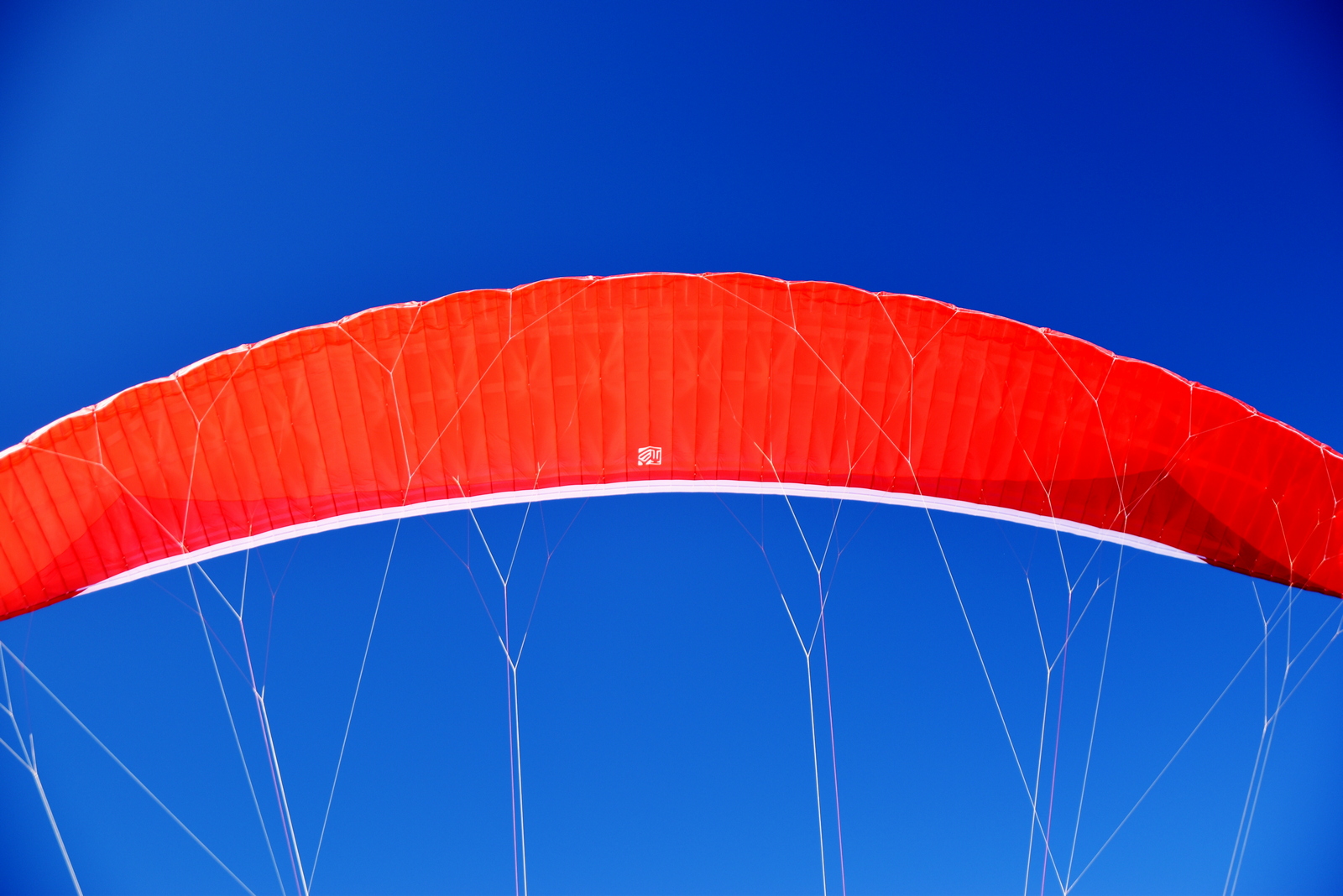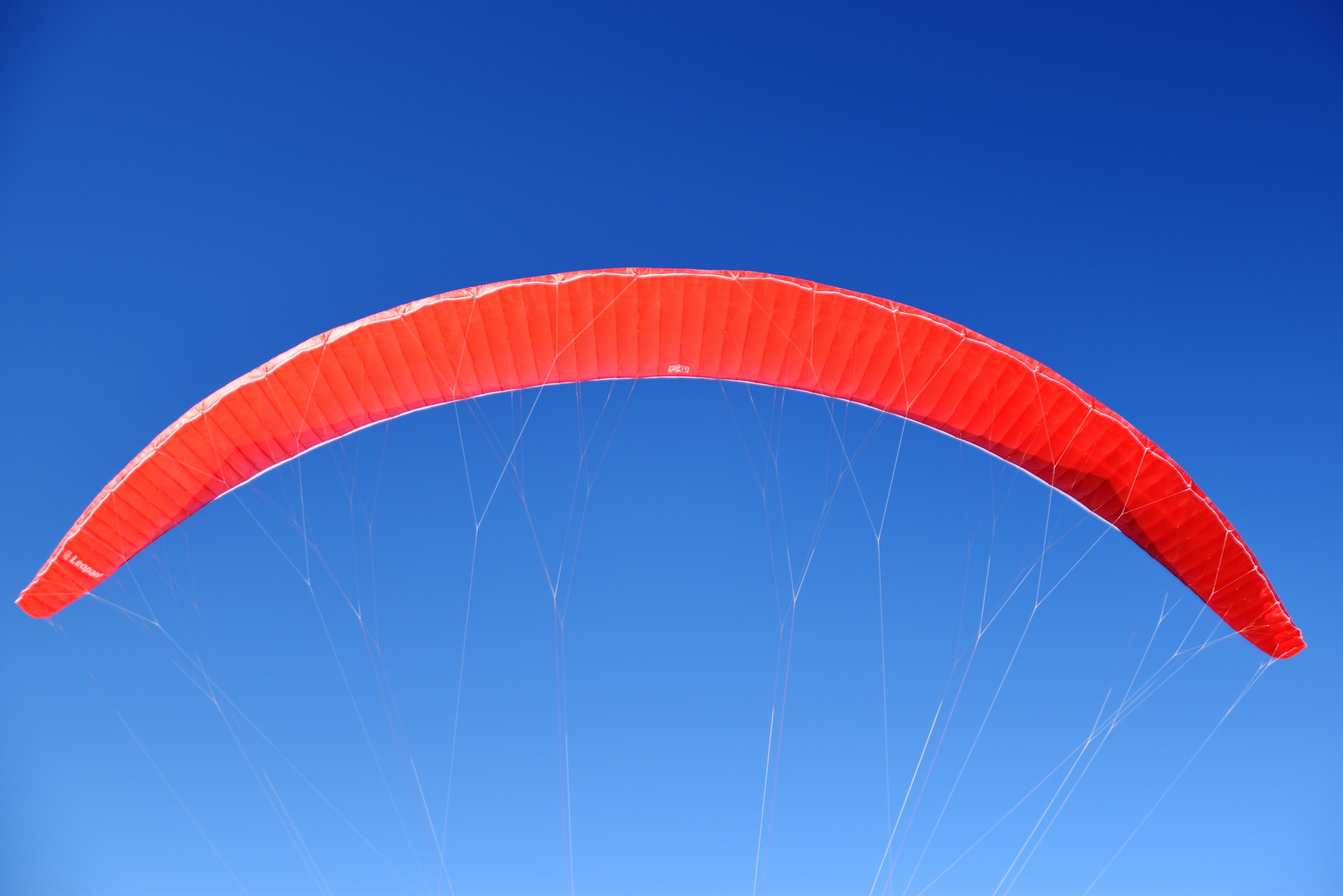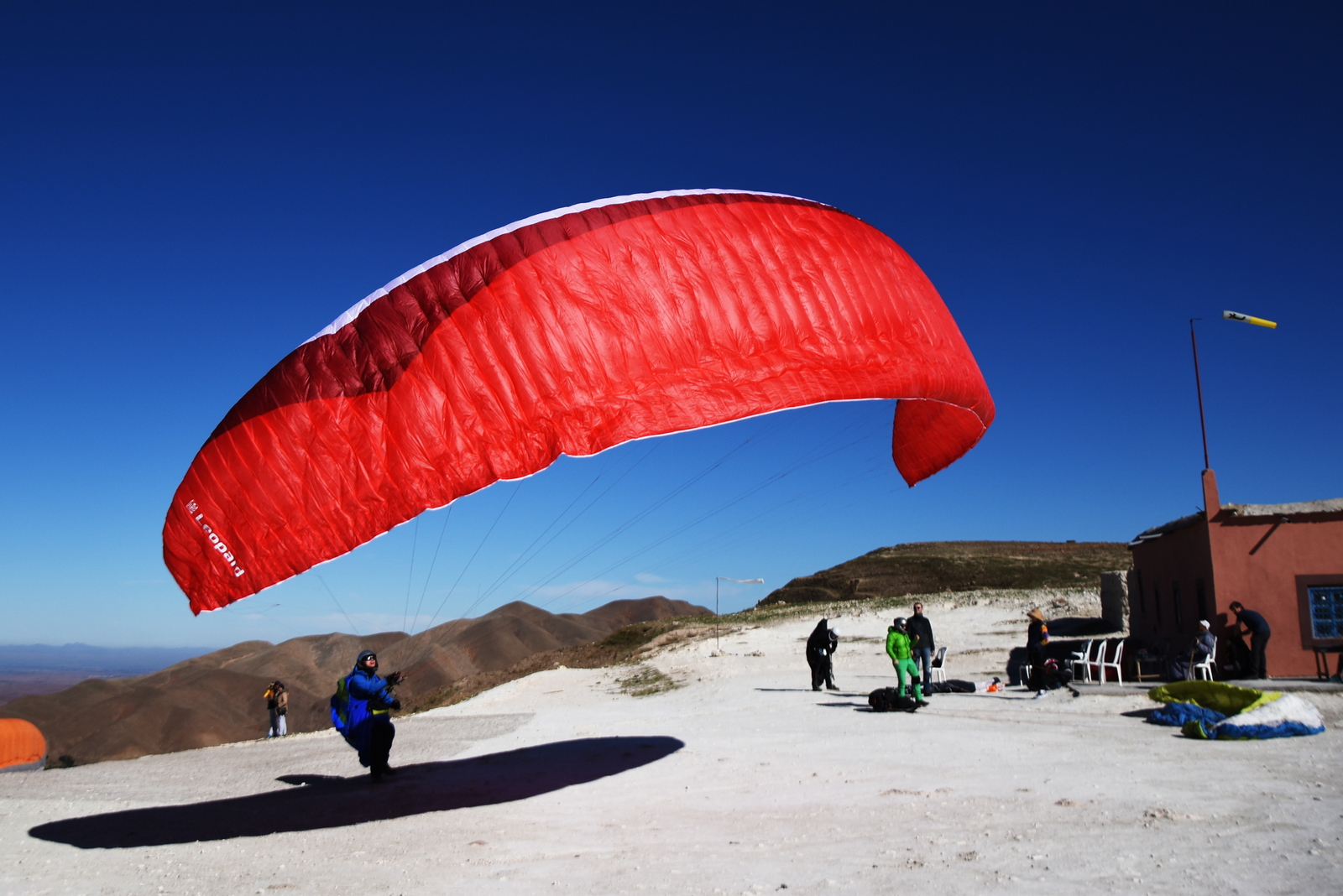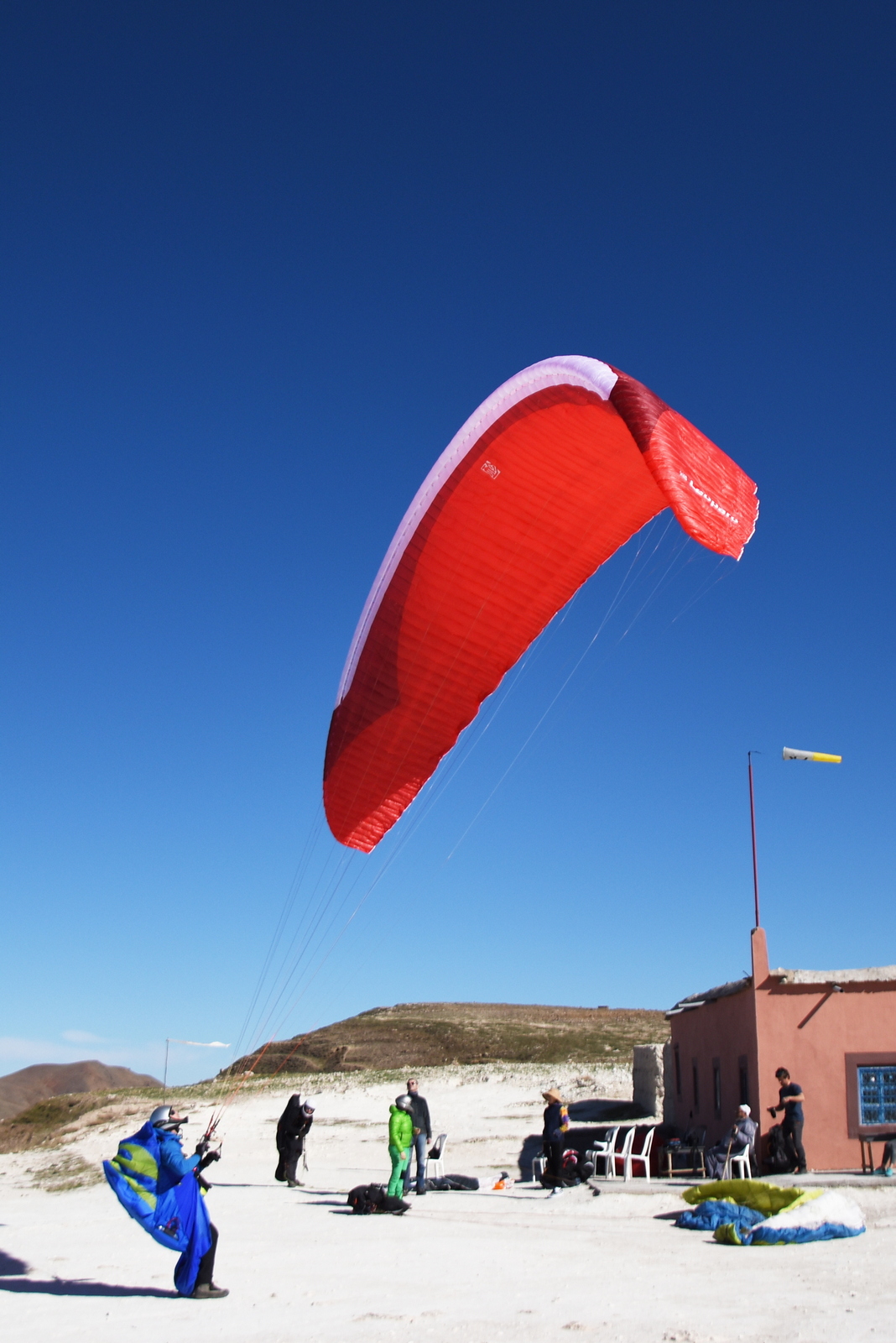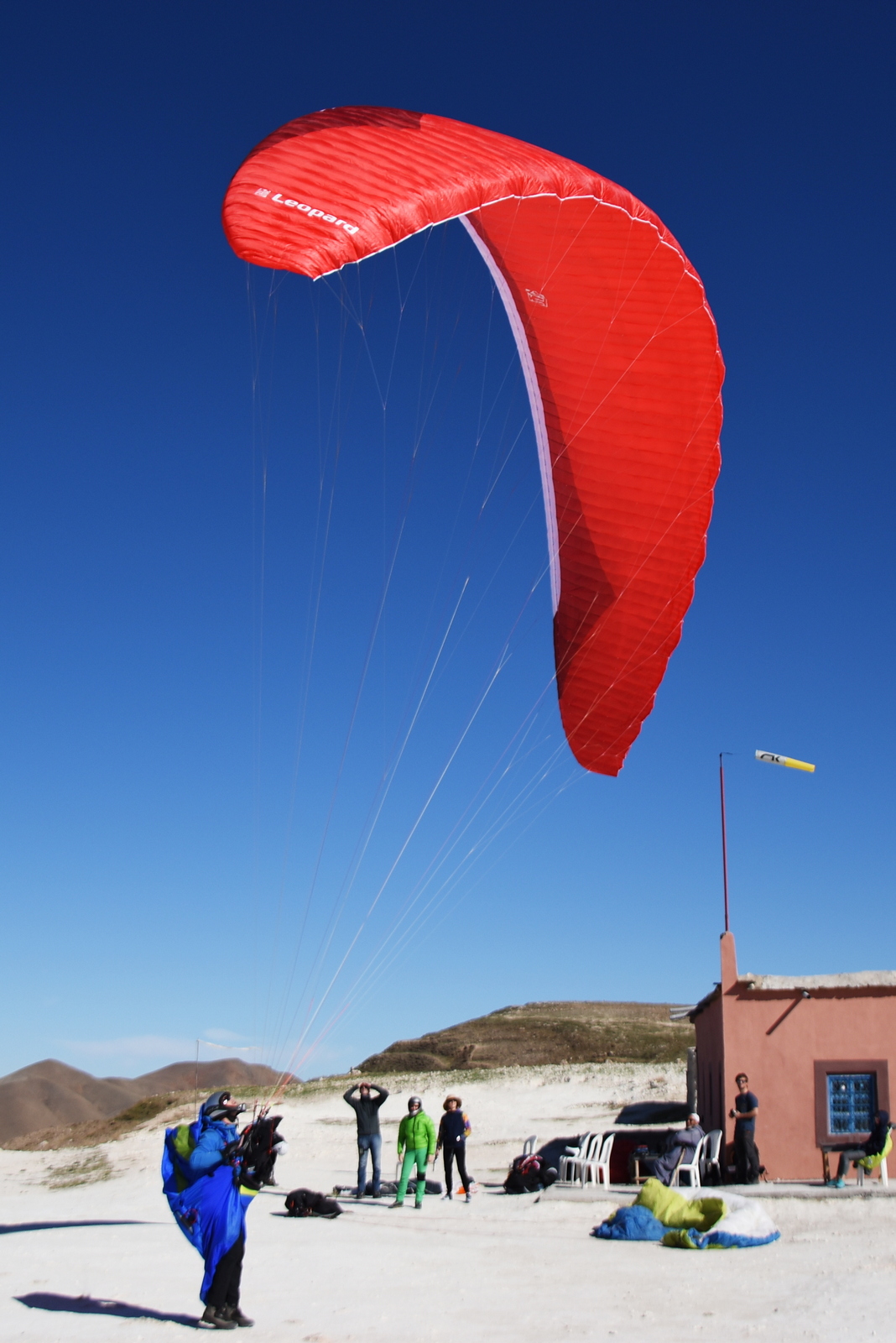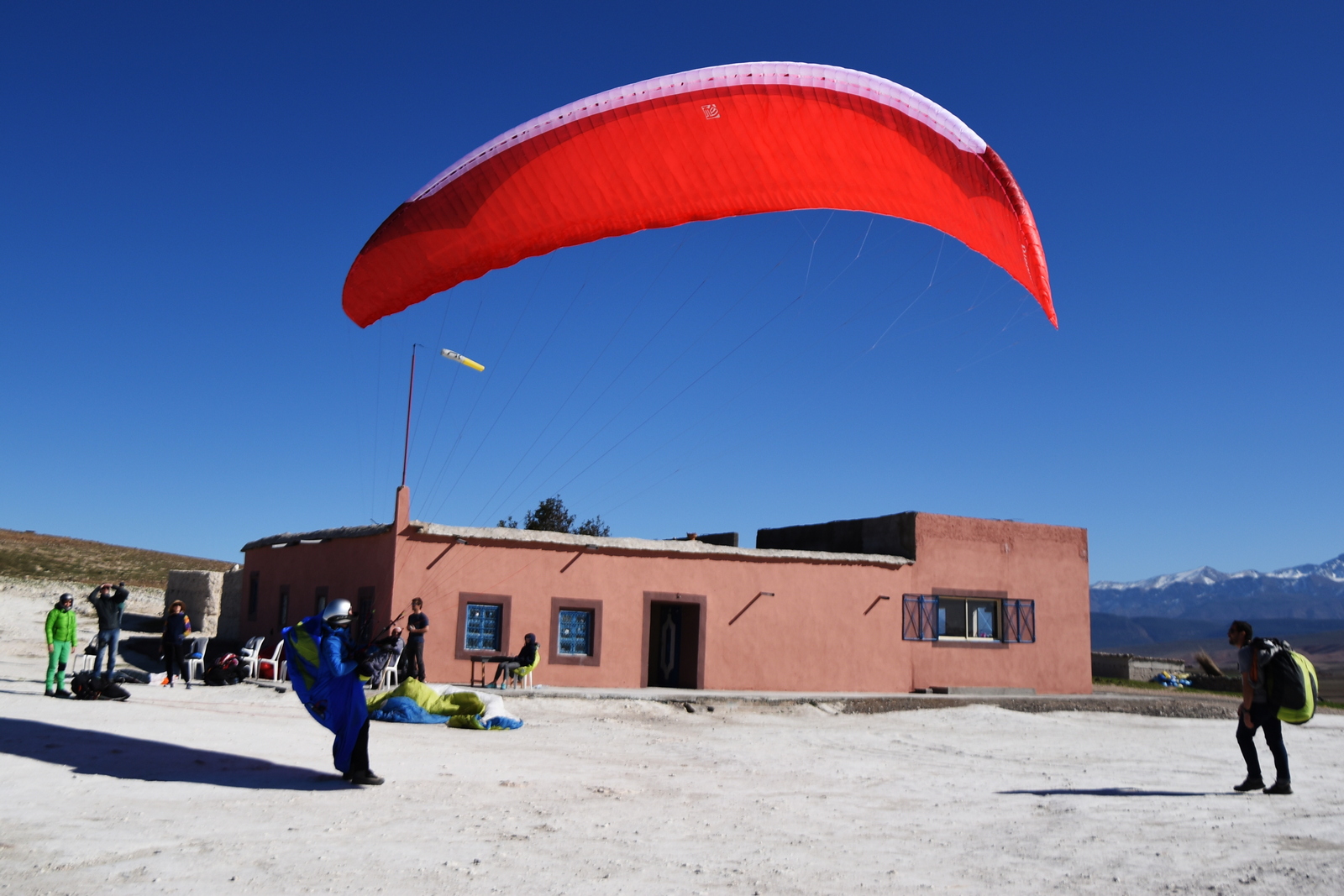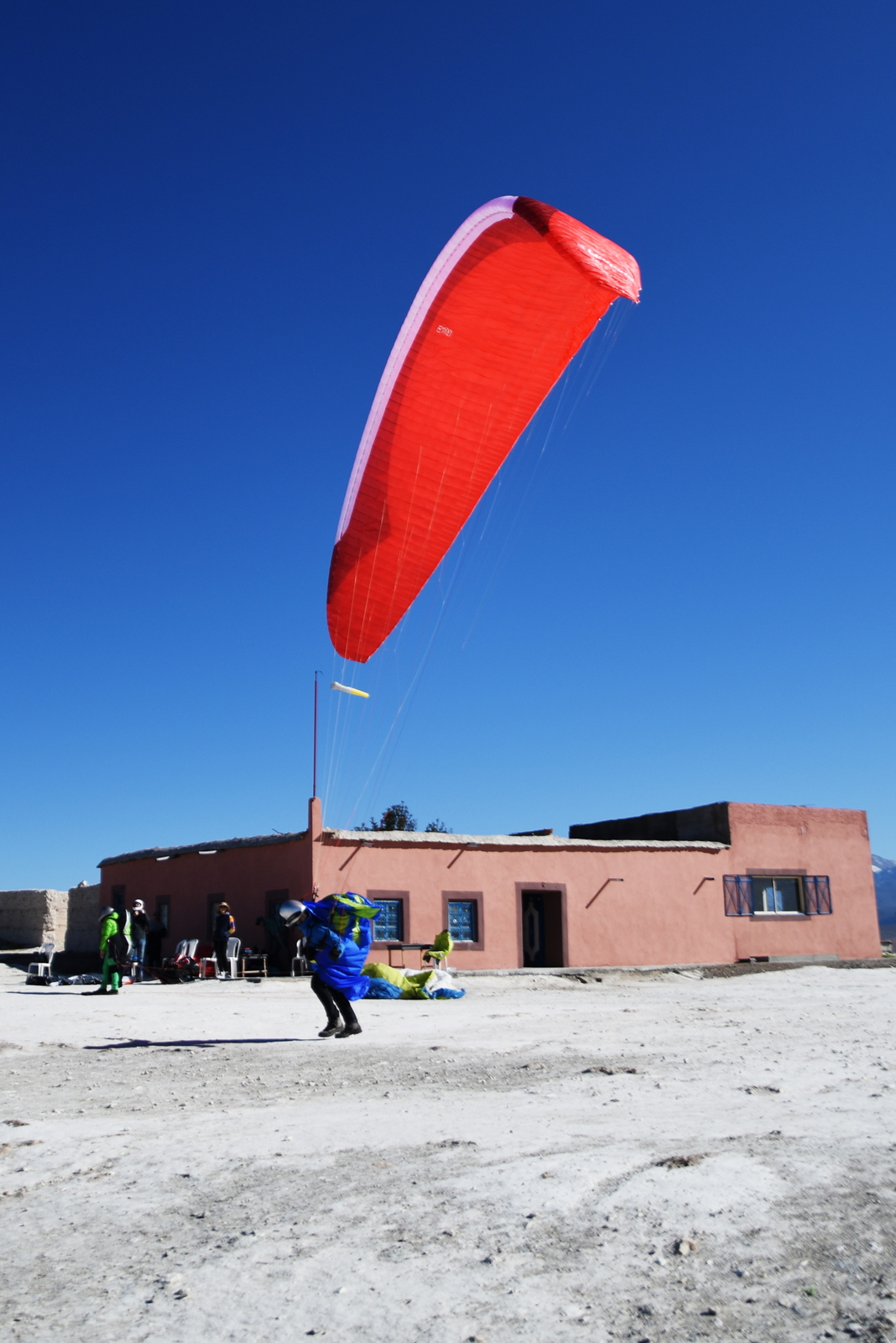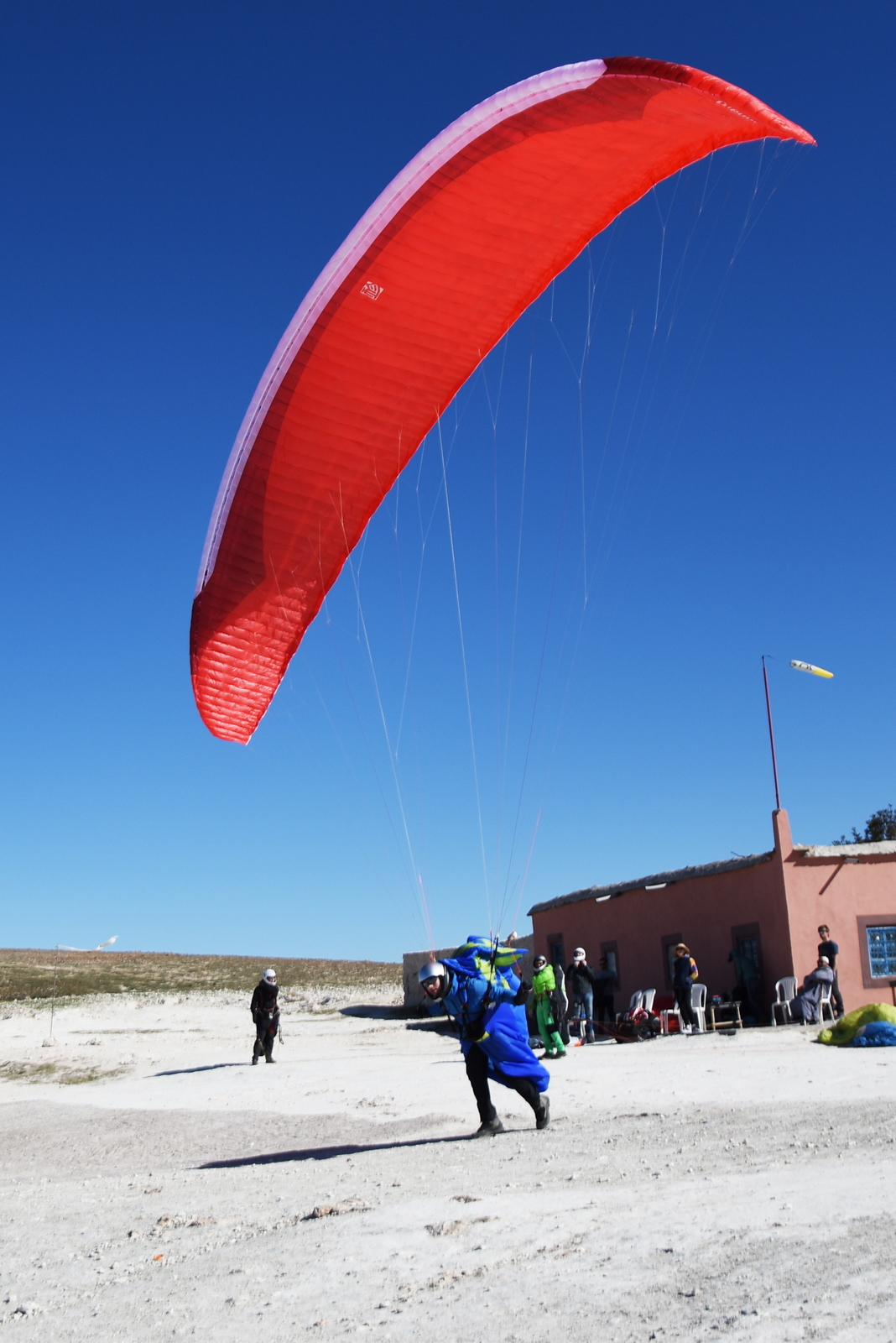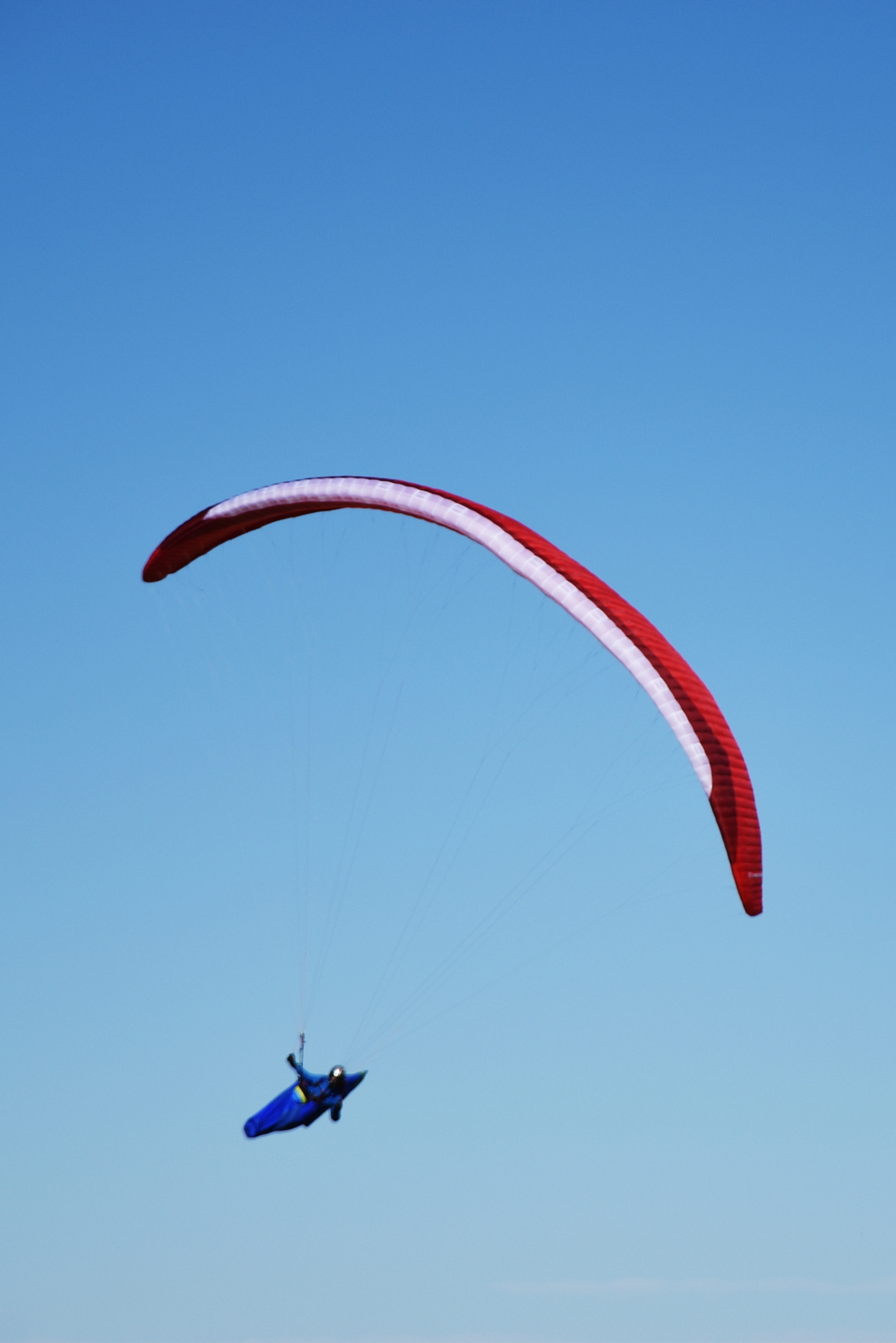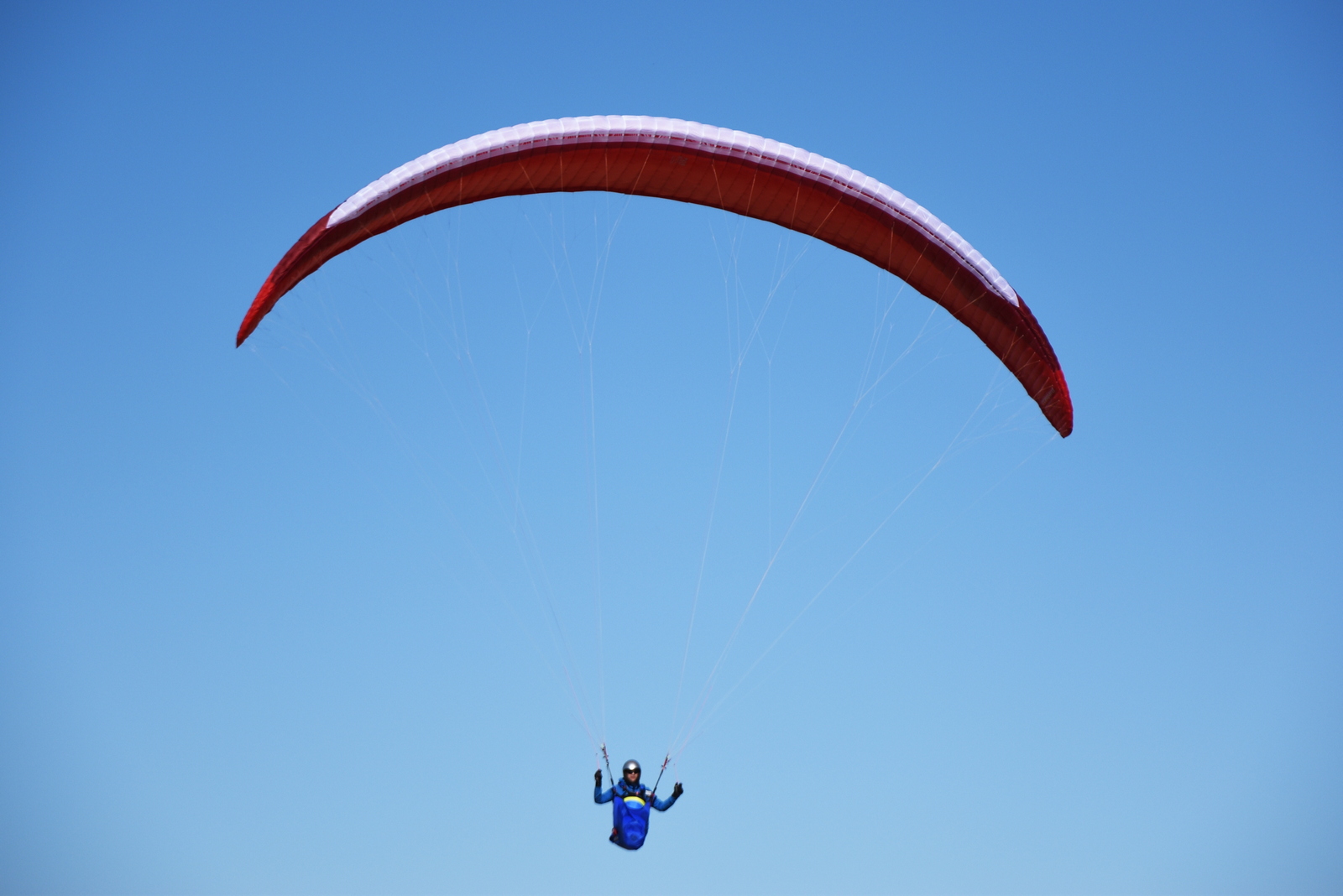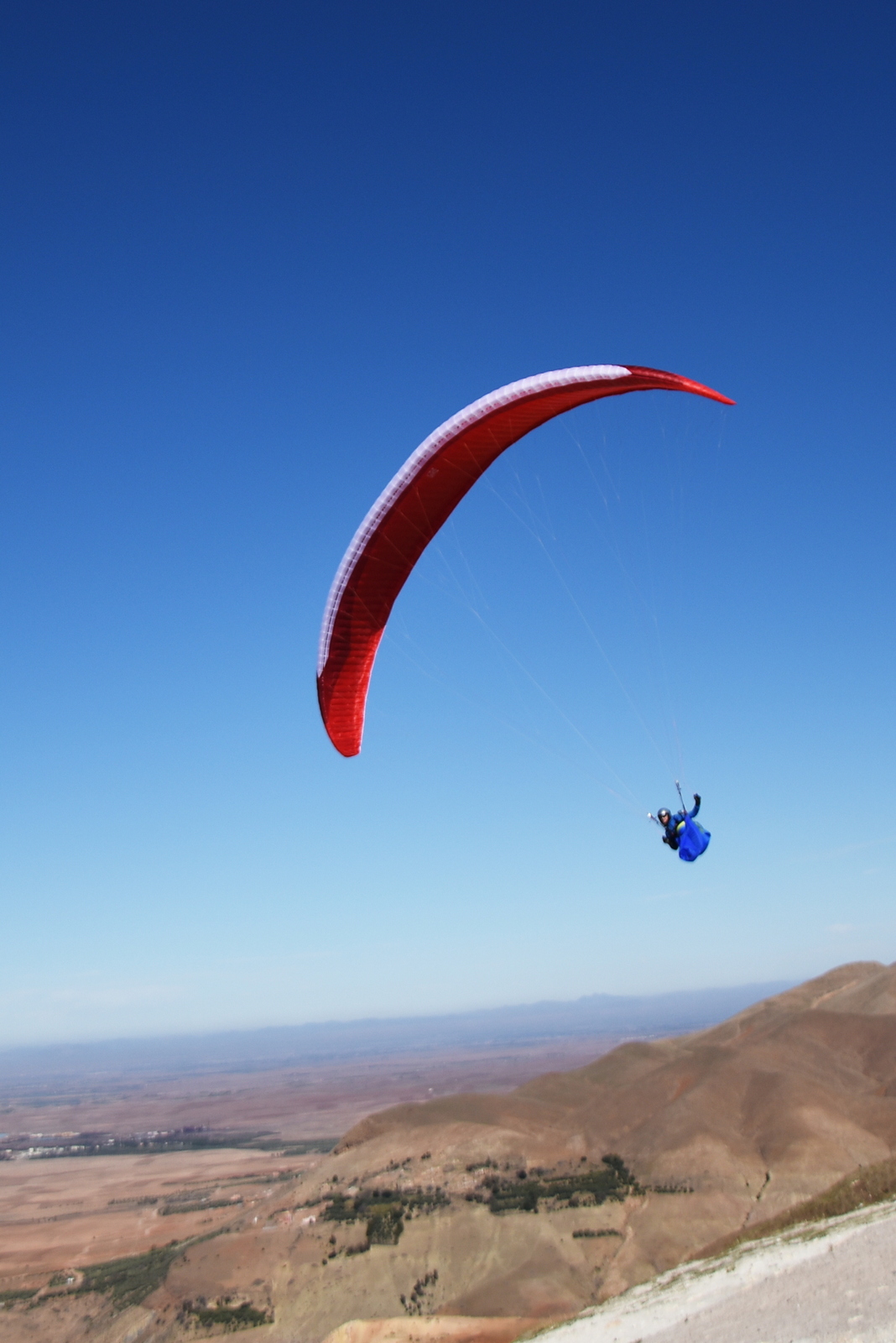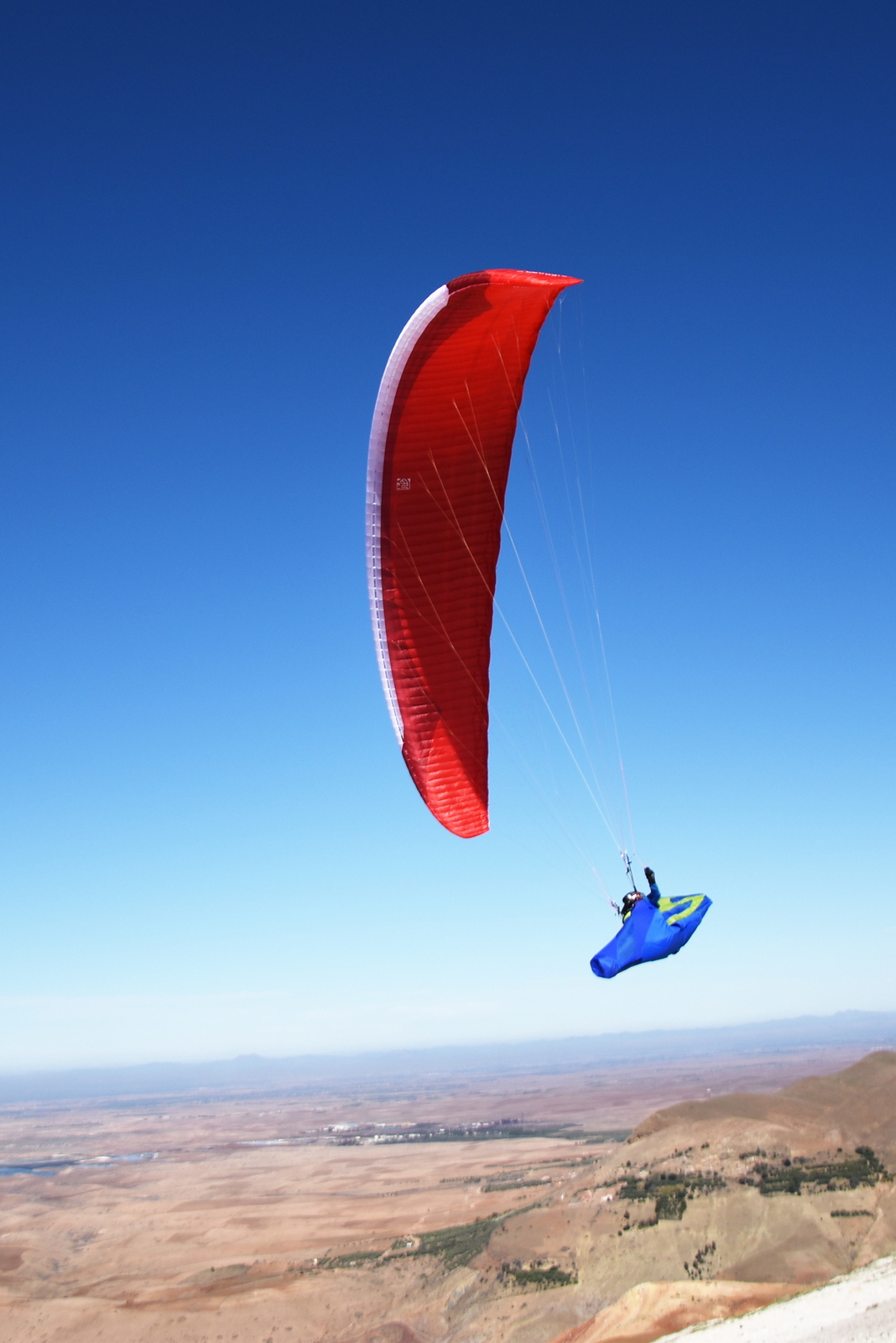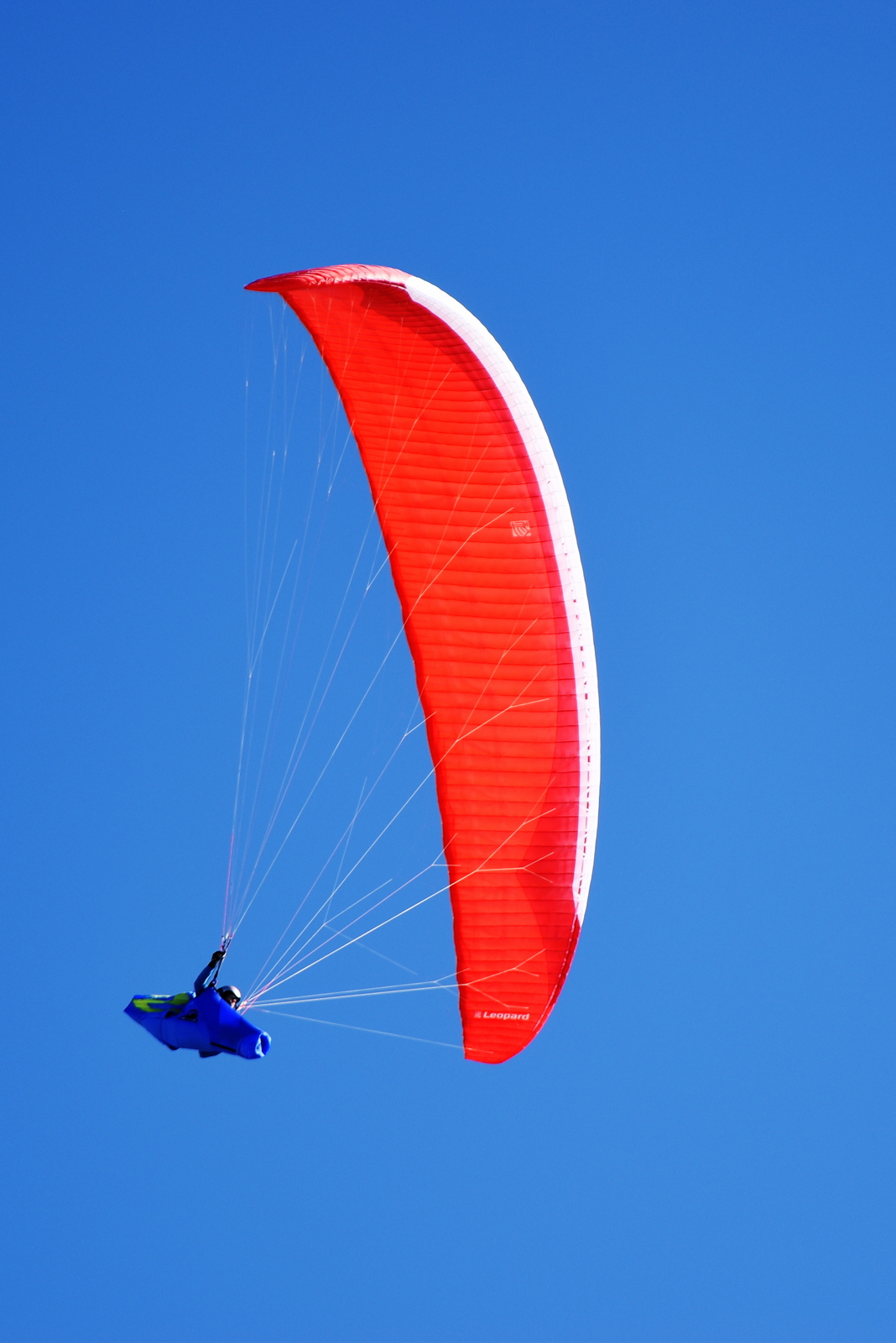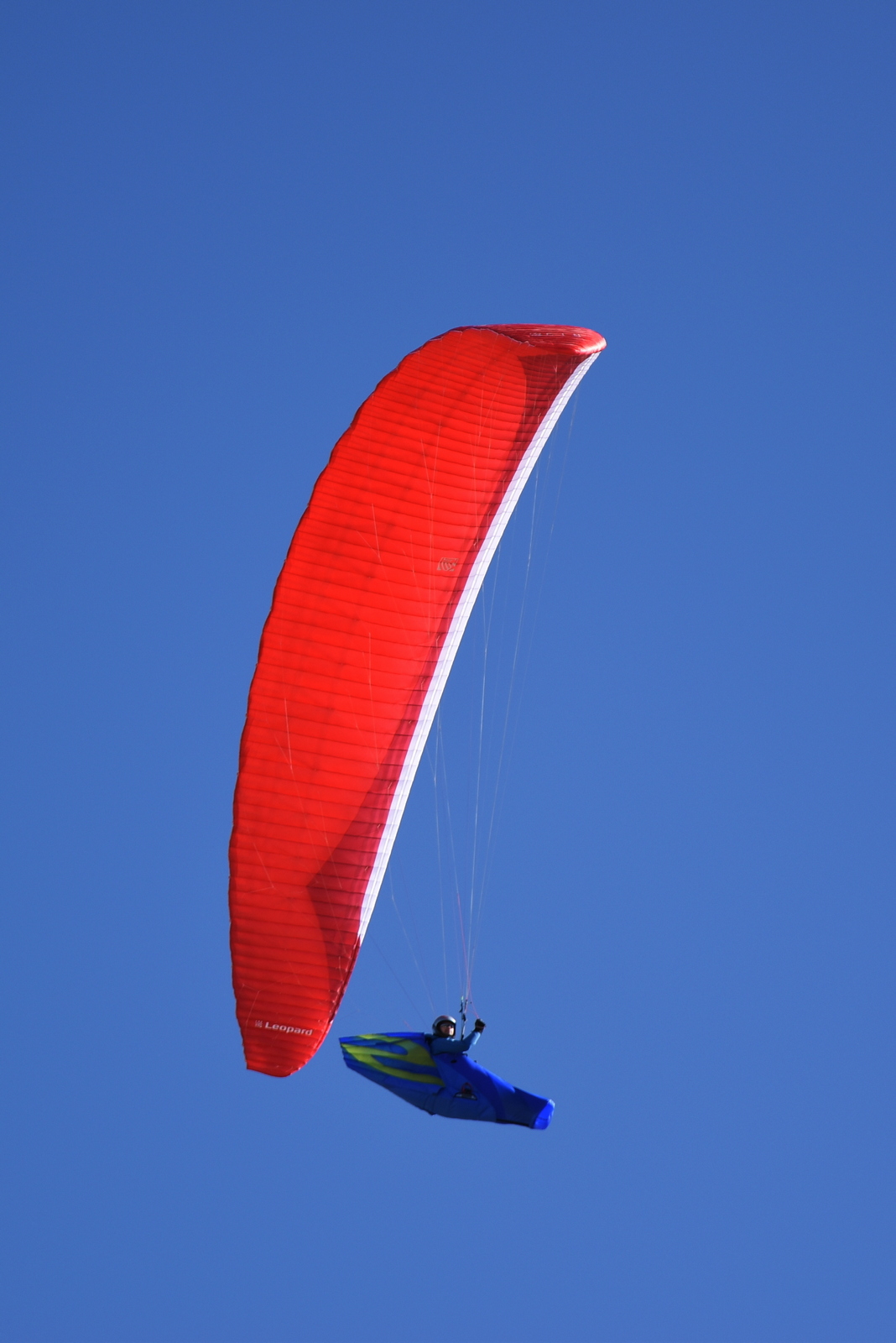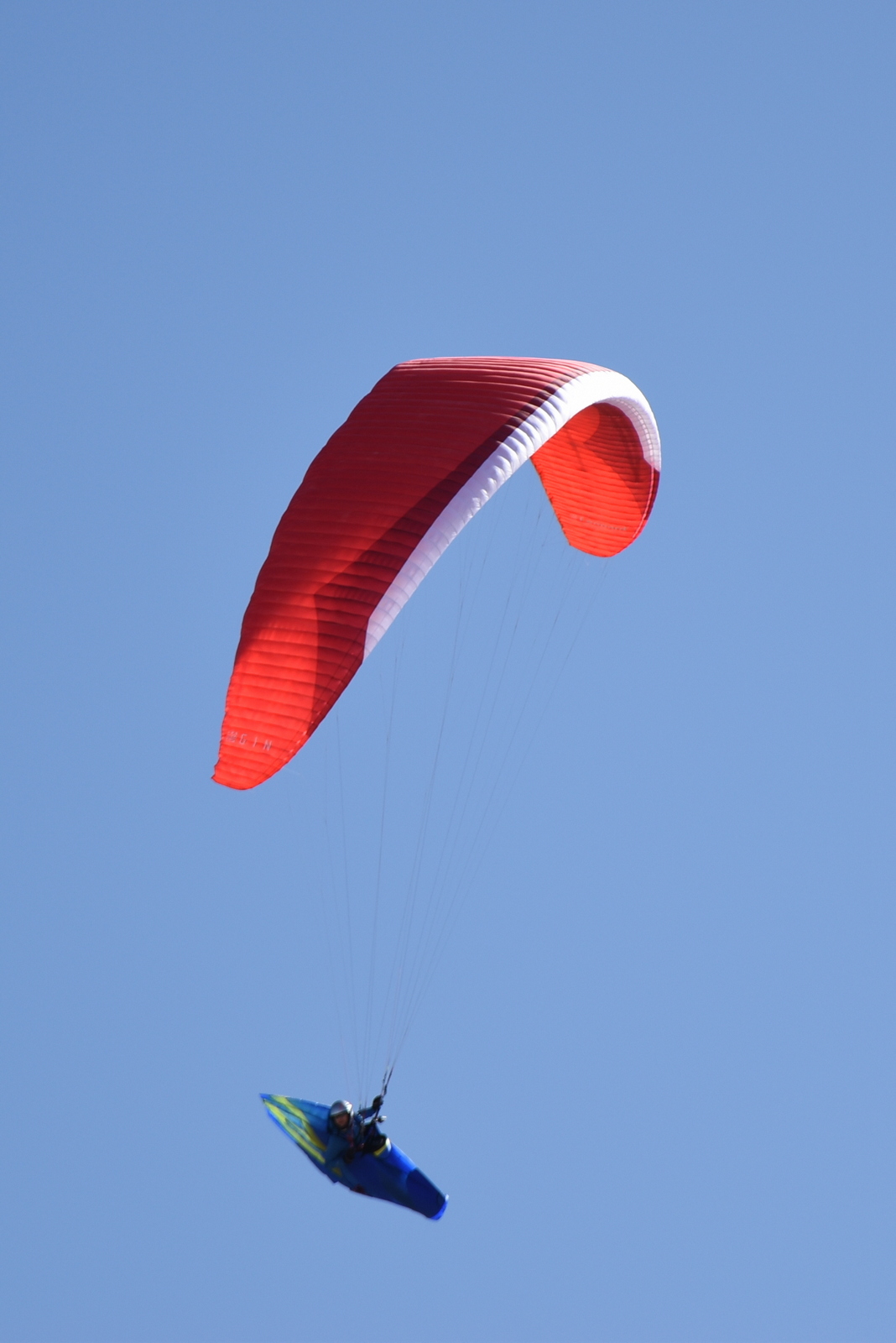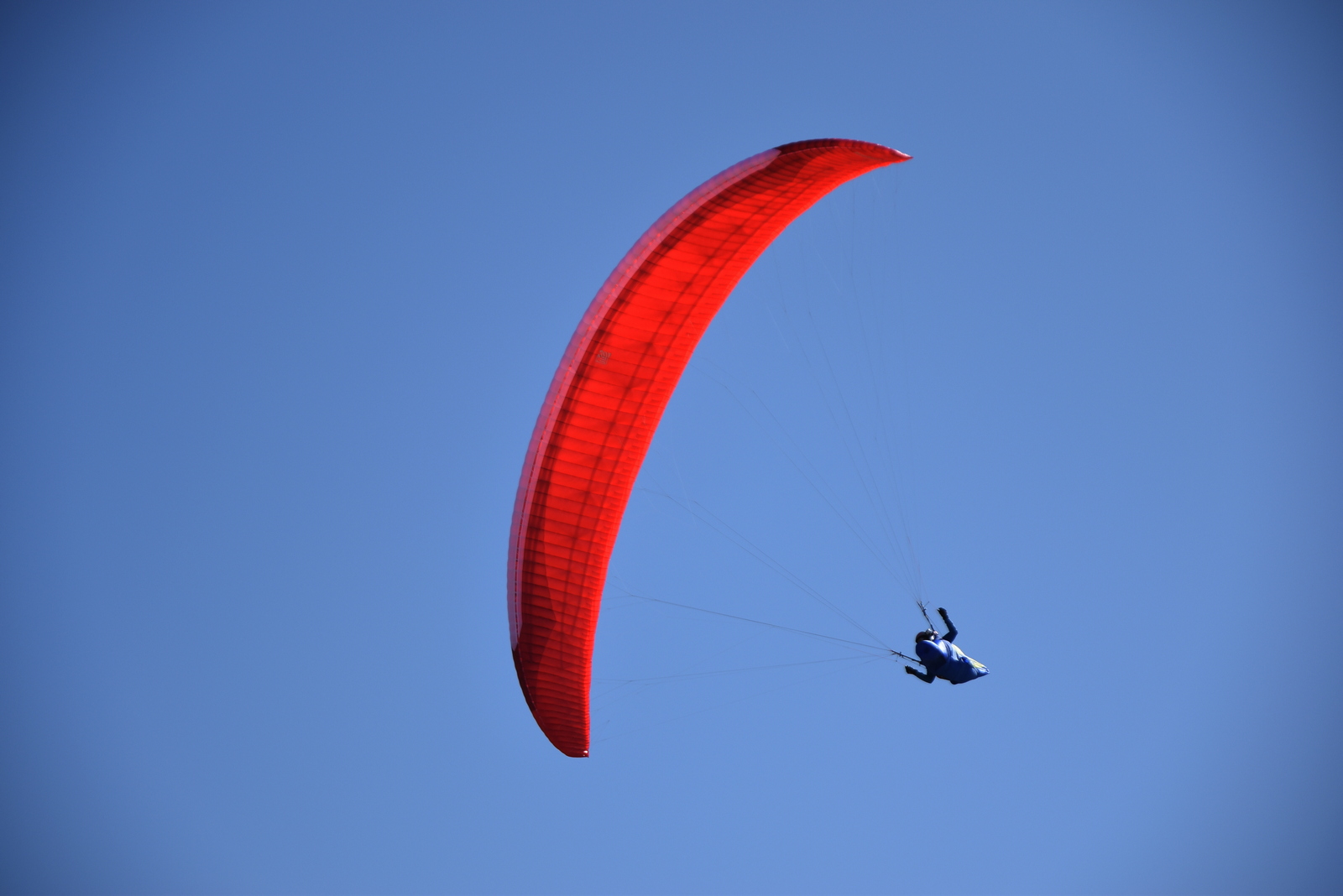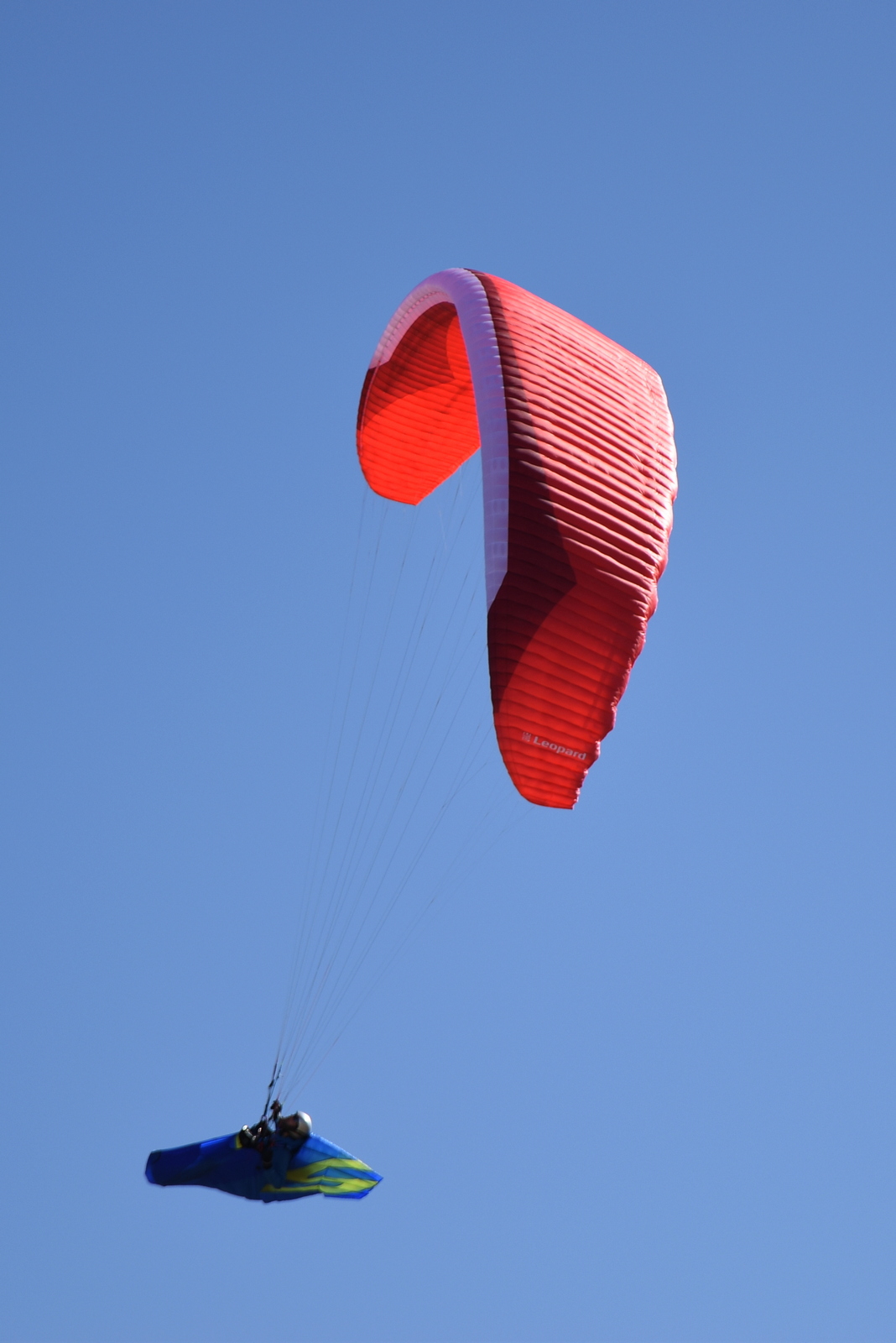The first GIN Gliders' EN D two-liner took a long time to born. Boomerang GTO2 was already sold out the stock, insights and announcements already started to break out, but the process dragged on for another year. What could a brand like GIN do in a couple years of hard work? They've just set a new market standard in EN D class! In plus, Gin Gliders gave up with the strange name Boomerang GTO and started from scratch with a loud and memorable name: Leopard.
Construction
Risers
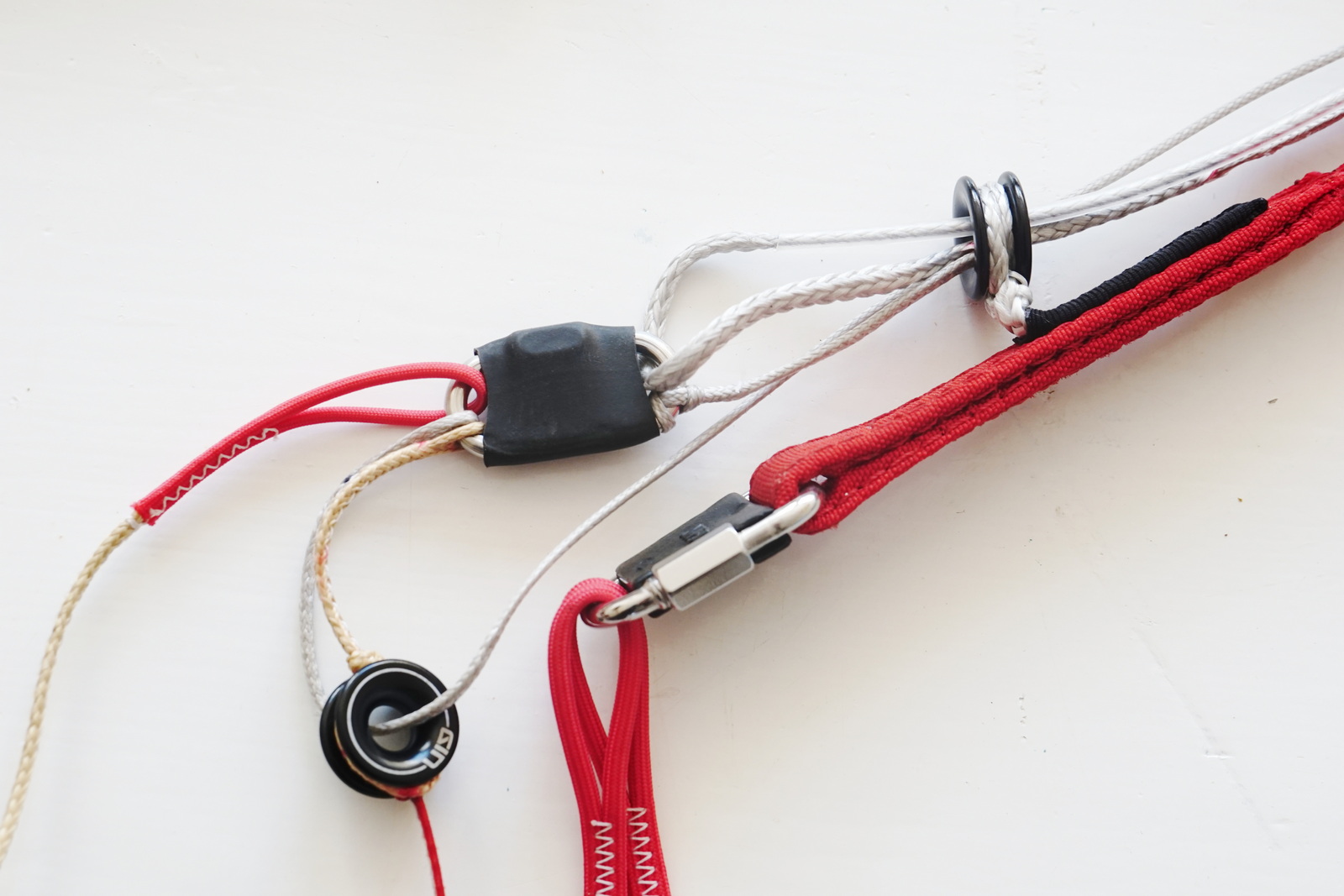
Impressive! No, not the quality of workmanship (which is always excellent at Gene's and therefore no longer evokes emotions), but the complexity of construction and kinematics. The fact that the outer sling of the A-row is placed in a separate branch of the ends for changing the twists when working with the gas pedal is already quite usual. But in Leopard three A-row slings out of four independently change their lengths! And that's not all. The outer sling of the B-row, abundantly branching both in span and chord, "holds" the whole Leopard's "ear" on itself. That is why at first it seemed that Leopard has no "anti-tie" sling - retraction of the external B-row sling will only lead to an increase of archedness. Later it turned out that it is possible to use an external A-row sling to fight "ties", but I haven't tried it myself.
The gas pedal is expectedly long, on heavy-duty rollers. The handles on the back rows — a delight! They are plastic, with a nice rough surface "under carbon", exactly the right size to hold comfortably.
The knobs are simple but comfortable, with magnets molded into the plastic. There are no swivels, for which Gene could be a little scolded — but part of their role is performed by very nice ceramic rings, which end the leashes. The leashes themselves are quite long and allow you to move your hands to the left and right when using the paddles. In case of large elongations this can have a noticeable effect on the wing's response to working with the paddles. The factory setting of the cranks was very correct — no backlash, but the trailing edge does not crumple at full throttle.
Workmanship — as always, excellent. It's Gene!
Lines
Canopy
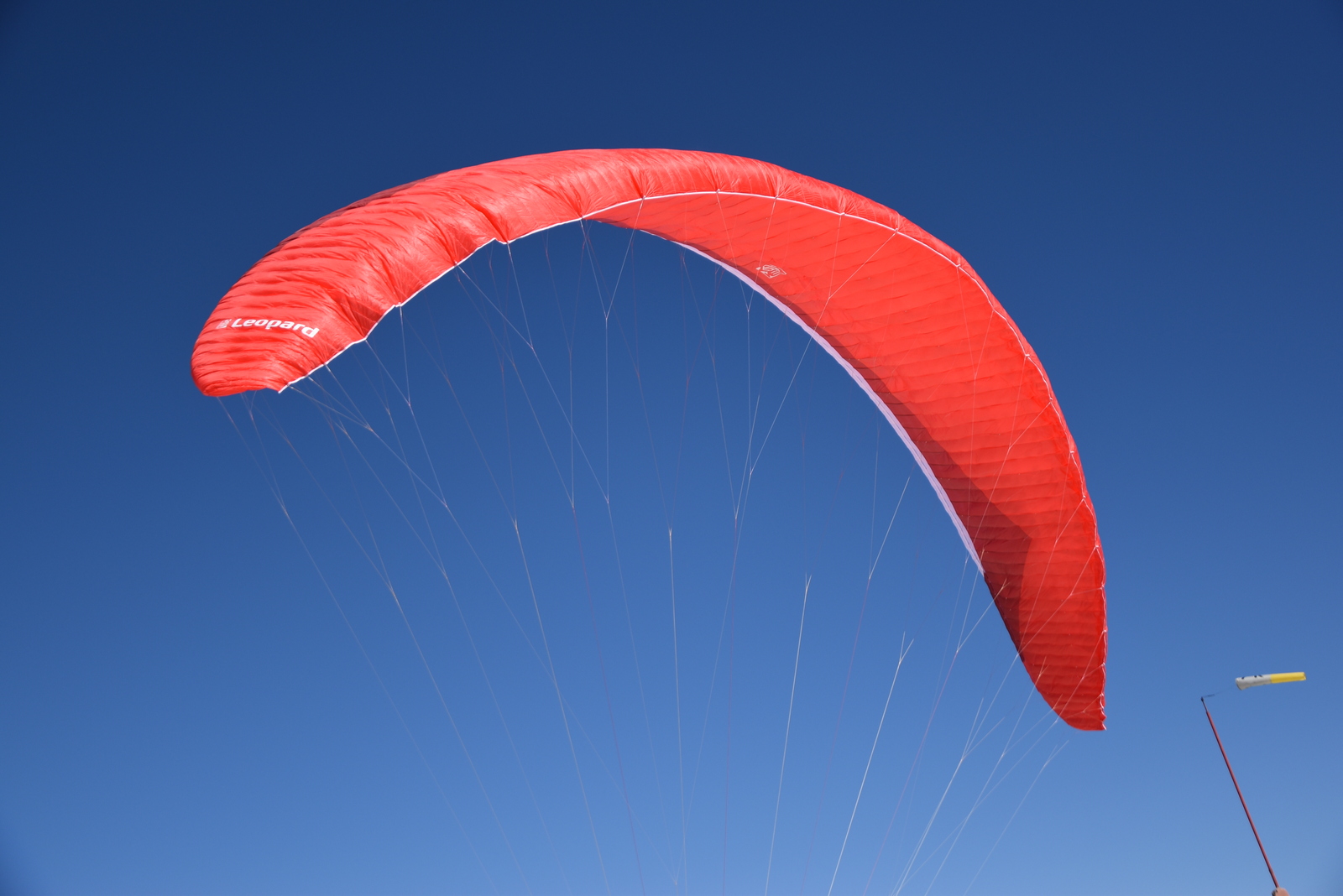
Build quality
Surface smoothness
Takeoff and groundhandling
Groundhandling
Takeoff
Flight
Glide
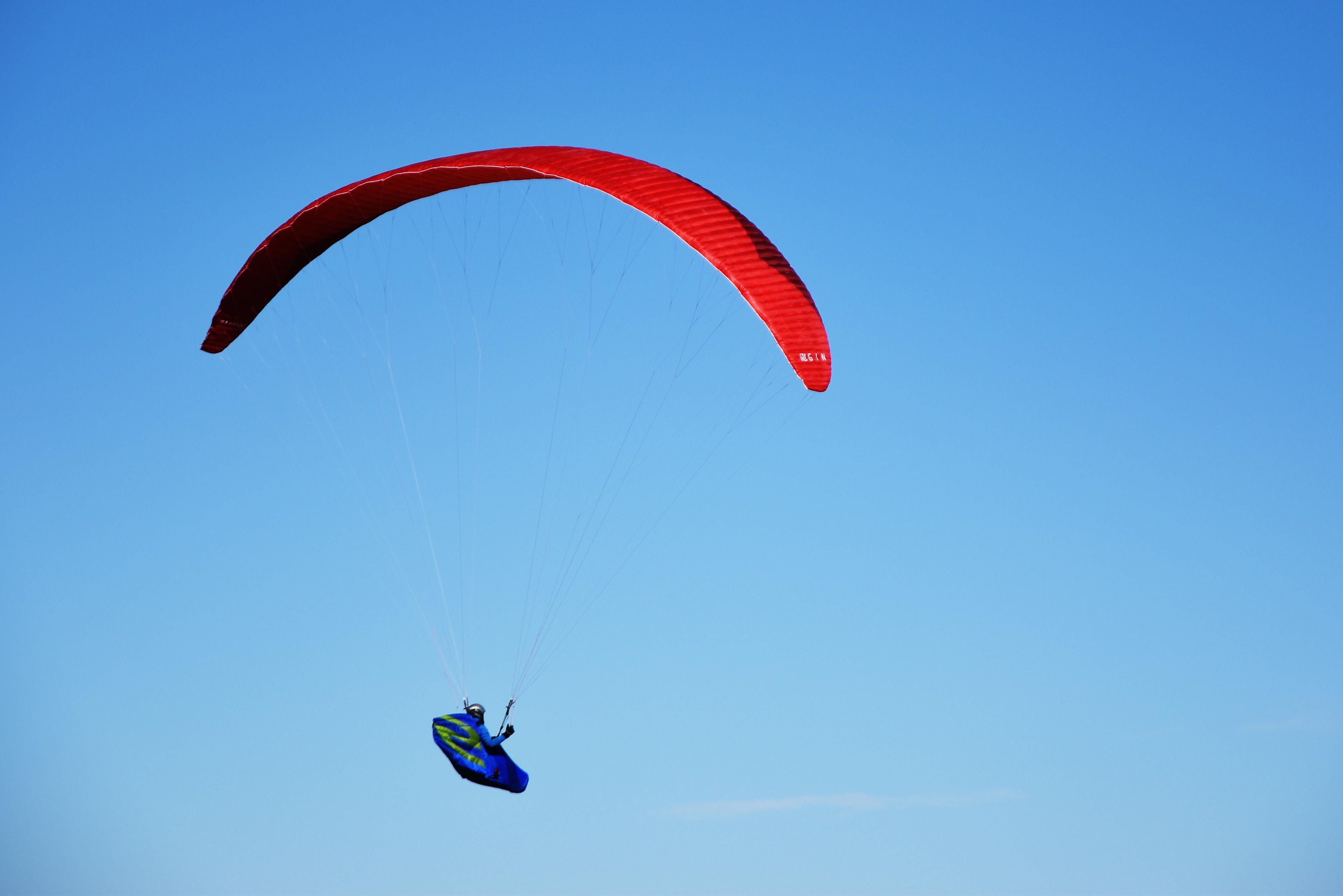
Accelerated flight
Speed gain
Speed system effort
Speed system travel
Soaring and sink rate
Sink rate in straight flight
Sink rate in spiral
Turn ability
Brakes efficiency
Weight shift efficiency
Rear risers control
Comfort and feedback
Comfort
Feedback
Dynamics and energy retention
Dynamics
Energy retention
There's an English word for outstanding. Literally — standing outward. Out of the ordinary. I think it's Leopard. And that's because the non literal translation of the word outstanding is outstanding. Yes, this device is outstanding against the background of all other equipment of its class. And in a number of ways. Outstanding flyability - no other paraglider of EN D class that I know of at the beginning of 2020 is able to gain up to 24 km/h at full throttle and fly with a record low planning angle. Outstanding in terms of precision, comfort and understandability of reactions to choppiness and pilot's actions. All in all, the Leopard at first acquaintance gives the pilot that hard-to-define feeling of "why, was it possible to do that?". It gives a lot and gives generously to the pilot — but demands surprisingly little in return. A great wing that shatters the perception of GIN Gliders as a company that makes top wings that are very flyable, but also very demanding for the pilot. There are no competitors to the Leopard in terms of flightability among two-rowers with the honest EN D label for the beginning of 2020 — and in terms of complexity of learning the Leopard is quite comparable to the legendary in its simplicity and friendliness Icepeak 6 from Niviuk and in some respects, perhaps, even more simple and understandable.
And still — does this Leopard have any noticeable disadvantages? Not noticeable — probably not. But it should be understood that I have not studied the behavior of the Leopard in dangerous flight modes and I quite admit that such a serious device in real operation will turn out to be quite difficult when getting into really difficult situations. Also, despite all the dithyrambs, one should realize that the Leopard is a wing with an elongation greater than 7, a very small number of slings and rather sharp (in absolute terms, not in comparison with other two-row EN D) reactions to the control, which automatically creates high requirements for the pilot. The minimum flight time required for a comfortable and safe transfer to the Leopard is estimated at 300 hours, of which at least 100 hours should be flown in the year preceding the purchase.
My personal impressions of the Leopard? I would take it without a second thought! And I am not switching to Leopard right now only because there is no direct need to do so.
Pros
- Outstanding performance
- Comfortable behavior in turbulence
- Simple, easy-to-understand glider
Cons
- Requires careful packing and storage due to long rigid inserts
Thanks
I would like to thank GIN Gliders dealer in Russia Anna Verbitskaya ( gingliders.ru ) and Vyacheslav Sapronenko for providing the paraglider for the tests.
Copyright
- Photo: V. Khokhlachev, I. Tarasova, A. Tarasov.
Technical data
| Flat area, sq. m. | 24,22 |
| Flat A.R. | 7,17 / 6,93 (CIVL) |
| Flat span, m | 13,18 |
| Projected area, sq. m. | 20,8 |
| Projected A.R. | 5,51 |
| Projected span, m | 10,71 |
| Cells, total | 86 |
| Cord max, m | 2,3 |
| Lines scheme | A2A'2C3 |
| Takeoff weight, kg | 95-112 |
| Glider weight, kg | 5,65 |
| Size | M |
Materials and components
| Upper surface, leading edge | Porcher | Skytex 38 g/m² |
| Upper surface except leading edge | Porcher | Skytex 32 g/m² |
| Bottom surface | Porcher | Skytex 27 g/m² |
| Lines, upper cascades | Edelrid | 8000U |
| Lines, middle cascades | Edelrid | 8000U |
| Lines, main (lower) cascades | Edelrid | 8000U |

